|
The Dragon Boat Festival (aka Double Fifth Festival) is a special time of year, during which Taiwan gets a major holiday vacation and there are Dragon Boat Races. During this time, people also must eat Zongzi. We have created this guide for you to see the official dragon boat races all around Taiwan and understand more about this special cultural festival.
Historical Background: Originally Dragon Boat Festival may have started during the Qin Dynasty as a day to remove evil spirits and bad luck that were thought to appear on the fifth day of the fifth month. The best known origin story for the Dragon Boat Festival is that it commemorates the death of Qu Yuan, a famous poet and official of the Chu Dynasty during the Warring States Period. He opposed the Chu Dynasty joining an alliance with the Qin, and therefore was banished. When the Qin Dynasty finally took over the Chu Dynasty, he committed suicide by entering the Miluo River (汨羅江 Mìluójiāng) and drowning himself. It was said that the local people went looking for him by rowing dragon shaped canoes, and threw sticky rice balls into the water so that the fish would eat the rice and not Qu Yuan's body. Because of this, during Dragon Boat Festival everyone eats stick rice, or Zongzi, and holds dragon boat races to commemorate Qu Yuan's memory. Another tradition is for people to balance eggs, which is thought to bring good luck during the "unlucky" holiday. Dragon Boat races usually involve a team rowing together, while someone beats a drum to keep rhythm and someone else stands at the front of the boat to catch the flag. Dragon Boat Festival is an official holiday in Taiwan, Hong Kong, Macau, China, and is celebrated by Chinese heritage communities throughout Asia and the world. When is Dragon Boat Festival? The fifth day of the fifth month of the lunar calendar. 2025: May 31st (national holiday starts May 30th) 2025: June 19th 2026: June 9th Can I go Dragon Boat Racing in Taiwan? Yes! You can join this Dragon Boat tour on Klook or this one on KKday any time of year. The cost is about 1300 NT per person. When are Dragon Boat Races in Taiwan? Training starts about a month before Dragon Boat Festival. The actual races begin a few days before or on Dragon Boat Festival, and can last a few days after as well. Races usually start at about 9 or 10 AM and last the whole day (some will end in the afternoon, some will have races at night). Where are the 2025 Dragon Boat Races in Taiwan? Taipei International Dragon Boat Championships: 台北國際龍舟錦標賽 Dates: (June 8-June 10 2024) Location: Dajia Riverside Park 大佳河濱公園 (under Dazhi Bridge going to Neihu near the airport along the Keelung River. There is parking at the riverside park, but it can get very crowded late in the day). New Taipei Dragon Boat Race 新北市龍舟錦標賽 Dates: (June 9-10 2024) Location: Luzhou Breeze Park 微風運河水域 Keelung Dragon Boat Festival 基隆龍舟競賽 Date: (June 9-10 2024) Held at Badouzi Harbor 八斗子漁港 Longtan Dragon Boat Races: June 8th-10th 2024 Held at Longtan Lake 龍潭大池 Hsinchu County Dragon Boat Festival 新竹縣縣長盃龍舟競賽 Dates: (June 10 2024) Held at No. 93 Xinshi Road Hsinfeng Township. 新豐鄉新市路九十三號 Miaoli Dragon Boat Races 苗栗龍舟賽 Dates: (June 10 2024) Held at dragon boat ferry dock along the Zhonggang River in Zhunan. 竹南鎮港墘里中港溪畔的龍舟碼頭 Changhua Lukang Night Boat Races 鹿港夜間龍舟賽 Date: (June 8-10 2024) Location: Lukang, along the FuLu River near Lukang Old Street (彰化福鹿溪水域) Yunlin Dragon Boat Races 雲林龍舟賽 Dates: (closed in 2024 until further notice) Location: Kouhu Township, Yiwu Wet Pond at the north pond (本縣口湖鄉宜梧滯洪池北池) Chiayi Dragon Boat Races 嘉義龍舟比賽 Date: (June 10 2024) Location: Dongshi Harbor 東石漁港 Tainan International Dragon Boat Championships: 台南市國際龍舟賽 Dates: (June 6-June 10 2024) Location: Yunhe River in Tainan Between Anyi Bridge and Chengtian Bridge, near Anping Old Street 臺南市運河(安億橋至承天橋河段) Kaohsiung Love River Dragon Boat Festival: 高雄愛河端午龍舟嘉年華 Dates: (June 8-June 10 2024) Location: The Love River between Kaohsiung Bridge and Zhongzheng Bridge (愛河, 高雄橋-中正橋). Pingtung County Dragon Boat Race 屏東縣端午龍舟競賽 Dates: (June 9-10 2024) Location: Underneath Donggang Great Bridge in Donggang (東港大橋). Yilan County Dragon Boat Race 宜蘭縣端午龍舟競賽 Dates: (June 10 2024) Location: Dongshan River Yicheng Bridge 冬山河義城橋 Hualien County Dragon Boat Race 花蓮縣端午龍舟競賽 Dates: (June 10 2024) Location: TBA (last year it was Liyu Lake 鯉魚潭) Penghu County Dragon Boat Festival 澎湖縣龍舟競賽 Dates: (June 10 2024) Location: Makung No. 3 Harbor (澎湖縣馬公第3漁港). Kinmen County Dragon Boat Festival 金門縣龍舟競賽 Dates: (June 10 2024) Location: Shuangli Lake雙鯉湖 Map: Please see below for a map of dragon boat racing locations.
6 Comments
Out in the foothills of former Kaohsiung County are tropical badlands, hills of easily eroding material that makes the landscape look so unique that you must think that it's on the moon. In the summer of 2014 the Foreigners in Taiwan team took a journey to this park in Tianliao which showcases these hills with trails and beautiful scenic views, and 4 years later here is the blog. It's definitely a strange landscape especially for Taiwan, and is worth a visit especially if you want to get some unique photos. You can also see some nearby mud hot springs.
Geological History: Moon World is part of a stretch of badlands that cover a large swath of southern Taiwan near the central mountain range. Typical badlands are found in dryer climates, are composed of sedimentary rocks, typically have very little vegetation, and have deep valleys or ravines. The badlands in Taiwan are unique in that they are in a tropical rain forest. How is this possible? The rocks at Moon World are composed of mudstone, sandstone, shale, and chalk. Because of high alkaline levels due to chalk in the soil, trees and grass cannot grow, and basically the only plant that can grow in the soil is spiny bamboo. The lack of vegetation as well as high rainfall gives way to quick eroding hills, or badlands. The Caoshan River and the Ganglin Rovers also helped to carve out the landscape and bare hills. Because of the white greyish color, the hills seem to glow when in moonlight,hence the name "Moon World." However to the casual observer, the landscape looks like the surface of the moon as well. Hours: All Day. However buses and restaurants will not run all day (there is no 7-11, only round-table chicken quick fry restaurants 土鷄). Price: Free! Accommodation We have stayed at and recommend Chao She Hotel (you can book on Agoda here, Booking.com here, Hotels.com here, or Expedia here) IHI Sanduo Travel Hotel (you can book on Agoda here, Booking.com here, Hotels.com here, or Expedia here), and Mingli Hotel (you can book on Agoda here, Klook here, or Hotels.com here) which are three inexpensive and high quality choices in downtown Kaohsiung. I also have stayed at and recommend Kaohsiung Meinong Rabbit Paul Homestay B&B (you can book on Agoda here, Booking.com here, or Trip.com here), a quiet B&B in rural Meinong, and Chengching Lakeside Resort (you can book on Agoda here, Booking.com or Trip.com here)and the Grand Hotel Kaohsiung (you can book on Agoda here, Booking.com here, Hotels.com here, or Expedia here) which both offer breakfast buffet and free entrance into Chenqing Lake Park. I have also stayed at the 85 sky tower which offers great views of the city; you can search for rooms in the 85 sky tower on Agoda here, Booking.com here, Hotels.com here, Expedia here, or Trip.com here). Find out more about where to stay in our Taiwan hotels guide or search for the best hotel deals in Taiwan here. We recommend booking through Agoda here, which provides the best quality selection of accommodation on the islands. You can also book Wifi and SIM cards for Taiwan on Gigago here. Need travel insurance? Compare prices on Insubuy here. Tours: You can find more tours and activities in Kaohsiung such as Pier 2, Meinong Hakka Museum, Hamasen Railway Museum, Suzuka Circuit Park, i-Ride Kaohsiung Visual 5D Flying Theater, National Science and Technology Museum , Senya Village Restaruant, Austin Land, Ski School Indoor Ski Slope, and many more on Klook here or KKday here. Just to let you know, if you book using the links above, we get some commission at no cost to you, and you can help support our blog. You can click here to receive $5 USD on your first Klook purchase. How to Get There: By Bus: You can either take the Kaohsiung City bus Red 70B from the Gangshan MRT station, or Kbus 8042 from Tainan HSR station. You can book tickets to travel to Kaohsiung via inter-city bus on Klook here. You can book tickets to Kaohsiung via high speed rail (HSR) on Klook here or KKDay here. Book tickets via the normal train (TRA) on Klook here. You can also book a Kaohsiung Travel pass here. By Car/Scooter: Take the Tianliao Exit on National Highway 3 and take provincial highway 28 to Tianliao. Looking for scooter rental in Kaohsiung? You can check out Klook here or KKday here to search for options. You can check also out our scooter rental guide here. If you are looking for car rentals, you can search Qeeq here, KKday here, or Klook here. You can also check out our car rental guide here. Please refer to the map below:
The Lotus Pond in Zuoying District of Kaohsiung is one of the most beautiful scenic areas in Taiwan. Much of the lake is full of traditional Chinese temples, gardens, and architecture. Because of its size, it cannot be properly appreciated by only going there for one afternoon; there are simply too many things to see and do there. In this blog, we will provide you a detailed virtual tour of the entire lake.
Historical Background: Lotus Pond was originally a small natural pond next to what is now the Zuoying Confucious Temple. Starting from 1686 after the Qing Dynasty captured Taiwan from the Kingdom of Tungming, the pond was gradually expanded for water storage and irrigation purposes. Also, lotus plants were cultivated on the pond, giving it its name. It was known as one of the eight beautiful scenes of Fengshan Old City. It also became a hotbed for temple building, and now over 20 temples stand by the lake. In 1951 the Qiming Temple, Spring and Autumn Pavilions, and Guanwu God Temple were completed. In 1976 the Dragon and Tiger pagodas were completed. In 1978 Wuli Pavilion was completed. Every year over a million visitors come to the park, although these numbers have gone down in recent years due to aging infrastructure and lack of new attractions. It is a haven for retired Taiwanese people to come and relax. Due to its close proximity to the Zuoying Jiucheng TRA station and Zuoying HSR station, it is also a popular attraction for tourists in Kaohsiung. Price: Free You can book water sport activities at the Lotus Pond on Klook here or KKday here. Hours: 8 AM - 6 PM (Dragon and Tiger Pagodas) Accommodation We have stayed at and recommend Chao She Hotel (you can book on Agoda here, Booking.com here, Hotels.com here, or Expedia here) IHI Sanduo Travel Hotel (you can book on Agoda here, Booking.com here, Hotels.com here, or Expedia here), and Mingli Hotel (you can book on Agoda here, Klook here, or Hotels.com here) which are three inexpensive and high quality choices in downtown Kaohsiung. I also have stayed at and recommend Kaohsiung Meinong Rabbit Paul Homestay B&B (you can book on Agoda here, Booking.com here, or Trip.com here), a quiet B&B in rural Meinong, and Chengching Lakeside Resort (you can book on Agoda here, Booking.com or Trip.com here)and the Grand Hotel Kaohsiung (you can book on Agoda here, Booking.com here, Hotels.com here, or Expedia here) which both offer breakfast buffet and free entrance into Chenqing Lake Park. I have also stayed at the 85 sky tower which offers great views of the city; you can search for rooms in the 85 sky tower on Agoda here, Booking.com here, Hotels.com here, Expedia here, or Trip.com here). Find out more about where to stay in our Taiwan hotels guide or search for the best hotel deals in Taiwan here. We recommend booking through Agoda here, which provides the best quality selection of accommodation on the islands. You can also book Wifi and SIM cards for Taiwan on Gigago here. Need travel insurance? Compare prices on Insubuy here. Tours: You can find more tours and activities in Kaohsiung such as Pier 2, Meinong Hakka Museum, Hamasen Railway Museum, Suzuka Circuit Park, i-Ride Kaohsiung Visual 5D Flying Theater, National Science and Technology Museum , Senya Village Restaruant, Austin Land, Ski School Indoor Ski Slope, and many more on Klook here or KKday here. Just to let you know, if you book using the links above, we get some commission at no cost to you, and you can help support our blog. You can click here to receive $5 USD on your first Klook purchase. How to Get There: By Car/Scooter: From central Kaohsiung, go north on provincial highway 17 and then turn north on Xinzhuang 1st Road. The pond is on your left and is hard to miss. There is free and paid parking all around the lake. Looking for scooter rental in Kaohsiung? You can check out Klook here or KKday here to search for options. You can check also out our scooter rental guide here. If you are looking for car rentals, you can search Qeeq here, KKday here, or Klook here. You can also check out our car rental guide here. By Train: From the north you can walk to the pond from Zuoying HSR station, or from the south you can walk there from Zuoying Jiucheng TRA Station. You can book tickets to travel to Kaohsiung via inter-city bus on Klook here. You can book tickets to Kaohsiung via high speed rail (HSR) on Klook here or KKDay here. Book tickets via the normal train (TRA) on Klook here. You can also book a Kaohsiung Travel pass here. By Bicycle: Cycling is the best way to enjoy Taiwan's landscapes if you have the time and energy. Looking for bicycle rentals in Taiwan? You can search on KKday here and search for tours on Klook here. You can also check out our Taiwan cycling guide here. Map: 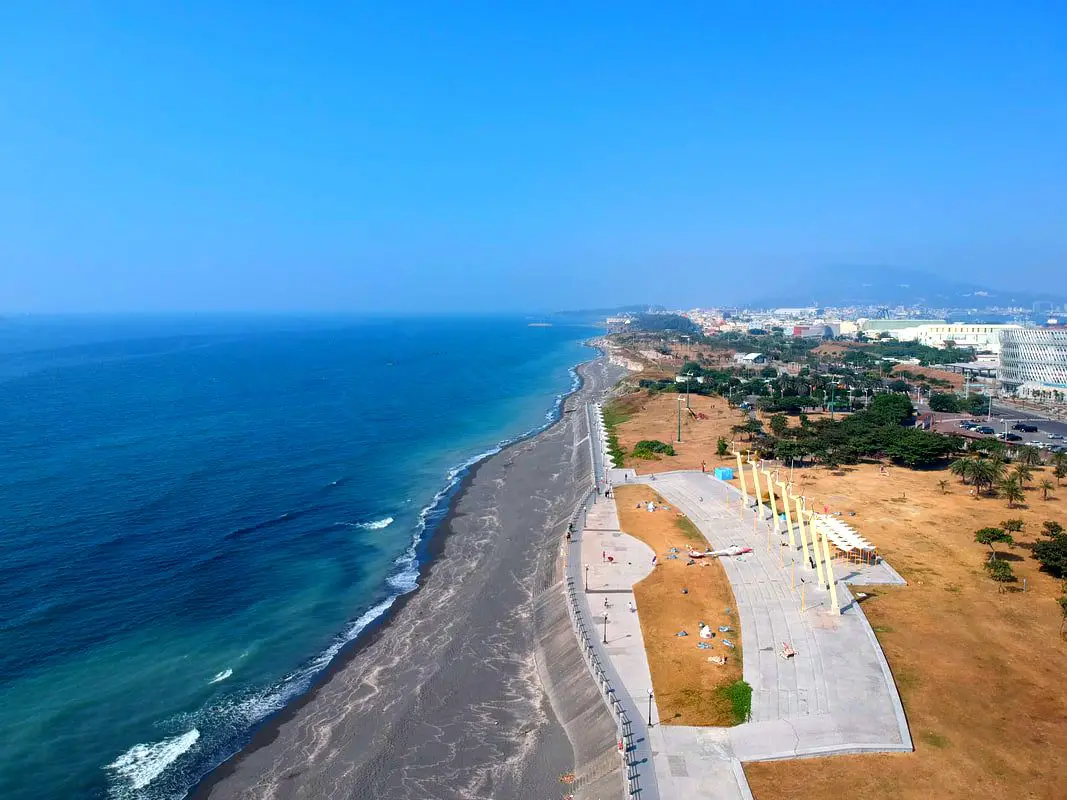
Qijin Island (aka Cijin Island or Chijin Island) has one of the most accessible sandy beaches to any urban area in Taiwan. Besides the nearly 10 Km stretch of sandy shores, the island also has an old street with tasty snacks, a seafood market, a lighthouse, an ancient fort, a star tunnel, a shell museum, and much more. It is one of the most popular destinations in Kaohsiung and definitely worth a trip.
Background: Qijin Island was first settled by a Chinese fisherman named Hsu Ah-hua (徐阿華) in the 1600's, discovered after he took shelter there during a typhoon. He brought many families with him from Fujian to settle there. They created the first Mazu temple there, Chi Jin Mazu Temple in 1673. The lighthouse dates from 1883 and was built in the English style. The fort on the hill to the north of the Island was completed in 1875 during the Qing dynasty. After WWII, Qijin was made a district of Kaohsiung City. In 1979, Taiping Island and Dongsha Island were added under the district's administration. Qijin Island used to be a sandbar peninsula, but was separated from mainland Taiwan at its southern tip to make a second entrance into Kaohsiung Harbor in 1967. There were plans for a cross harbor gondola but they were scrapped due to the height needed to cover the harbor. Price: Passenger ferry crossing: 40 NT Bicycle ferry crossing: 50 NT Motorcycle ferry crossing: 80 NT Showers: Free! Hours: 24/7 Tours: You can find more tours and activities in Kaohsiung such as Pier 2, Meinong Hakka Museum, Hamasen Railway Museum, Suzuka Circuit Park, i-Ride Kaohsiung Visual 5D Flying Theater, National Science and Technology Museum , Senya Village Restaruant, Austin Land, Ski School Indoor Ski Slope, and many more on Klook here or KKday here. Just to let you know, if you book using the links above, we get some commission at no cost to you, and you can help support our blog. You can click here to receive $5 USD on your first Klook purchase. Accommodation We have stayed at and recommend Chao She Hotel (you can book on Agoda here, Booking.com here, Hotels.com here, or Expedia here) IHI Sanduo Travel Hotel (you can book on Agoda here, Booking.com here, Hotels.com here, or Expedia here), and Mingli Hotel (you can book on Agoda here, Klook here, or Hotels.com here) which are three inexpensive and high quality choices in downtown Kaohsiung. I also have stayed at and recommend Kaohsiung Meinong Rabbit Paul Homestay B&B (you can book on Agoda here, Booking.com here, or Trip.com here), a quiet B&B in rural Meinong, and Chengching Lakeside Resort (you can book on Agoda here, Booking.com or Trip.com here)and the Grand Hotel Kaohsiung (you can book on Agoda here, Booking.com here, Hotels.com here, or Expedia here) which both offer breakfast buffet and free entrance into Chenqing Lake Park. I have also stayed at the 85 sky tower which offers great views of the city; you can search for rooms in the 85 sky tower on Agoda here, Booking.com here, Hotels.com here, Expedia here, or Trip.com here). Find out more about where to stay in our Taiwan hotels guide or search for the best hotel deals in Taiwan here. We recommend booking through Agoda here, which provides the best quality selection of accommodation on the islands. You can also book Wifi and SIM cards for Taiwan on Gigago here. Need travel insurance? Compare prices on Insubuy here. How to get there: By Passenger Ferry: Ferry's leave from Gushan near Xiziwan MRT station about every 10 minutes 24/7 (every half hour at after midnight). Or there is also another passenger ferry in Qianzhen that connects with Zhong Zhou Ferry Terminal. The gates are only open in the early morning and in the afternoon as noted above. You can book tickets to travel to Kaohsiung via inter-city bus on Klook here. You can book tickets to Kaohsiung via high speed rail (HSR) on Klook here or KKDay here. Book tickets via the normal train (TRA) on Klook here. You can also book a Kaohsiung Travel pass here. By Car/Scooter: Take the underwater tunnel on the south side of the island. Scooters can cross, but not bicycles. Looking for scooter rental in Kaohsiung? You can check out Klook here or KKday here to search for options. You can check also out our scooter rental guide here. If you are looking for car rentals, you can search Qeeq here, KKday here, or Klook here. You can also check out our car rental guide here. Map: Please see below for the places we will cover in this blog:
Cheng Ching Lake (aka Cheng Cing Lake or Ching Qing Lake) in Kaohsiung is one of the most beautiful parks in Taiwan. Much of the lake is full of traditional Chinese gardens and architecture. Because of its size, it cannot be properly appreciated by only going there for one afternoon; there are simply too many things to see and do there. In this blog, we will provide you a detailed virtual tour of the entire lake.
People often don’t realize that Kaohsiung has a lot to offer to tourists. Many of the places down south aren’t represented as well in English as other sites in Taipei, which is why we want to help everyone realize what a great place it is. I used to live in Kaohsiung and exercised at Cheng Ching Lake daily, and it was like living in paradise every day. There are many Kaohsiung residents that visit the lake daily for free, and I envy them. Historical Background: Cheng Ching lake is the largest lake in Kaohsiung. Originally it was only a small irrigation pond, but in 1940 the Japanese diverted water here from the Gaoping River to act as a water supply for the surrounding area. During that time it was called Dabei Lake (大埤湖), however Chiang Kai-Shek (the leader of the ROC) renamed it Cheng Ching Lake (澄清湖) in 1963. The ROC army used the lake as a base shortly after the Chinese Civil War, and built an underground tunnel and bunker to prevent against nuclear attack, which has now been converted into the Cheng Ching Lake Exotic Marine Life Museum. The lake contains a number of memorials to ROC soldiers, such as memorial plaques, army veterans mausoleum, and Fuguo island to commemorate soldiers that fled to the island of the same name in Vietnam during the Chinese Civil War. The lake is meant to resemble Xihu (西湖, west lake) in Hangzhou, China. Chiang Kai-shek built a winter chateau on the lake, one of 30 guests houses that were built for him in Taiwan. Surrounding the lake are a number of other notable sites including the Kaohsiung Yuanshan Hotel Resort, Cheng Ching Lake Baseball Field, Cheng Ching Golf Club, Kaohsiung number 7 waterworks station, Kaohsiung Chang Gung Memorial Hospital, and Cheng Ching Lake Youth Activity Center. Chengqing Lake is also a water source for a large area of Kaohsiung. Because of this (as well as risk of drowning), fishing and swimming in the lake are forbidden. Every year over a million visitors come to the park, although these numbers have gone down in recent years due to aging infrastructure and lack of new attractions. It is a haven for retired Taiwanese people to come and relax, and more and more young people seem to forget it exists. Price: 100 NT per person 50 NT for students, 60/100 NT for cars (there is a discount for cars on weekdays), and 30 NT for scooters. Kaohsiung residents: free! Chengching Lakeside Resort: 1,000-3,000 NT per night (you can book on Agoda here, Booking.com or Trip.com here) Grand Hotel Kaohsiung: 3,000-10,000 NT per night (you can book on Agoda here, Booking.com here, Hotels.com here, or Expedia here) Hours: 4 AM - 9 PM (no entry after 6 PM) How to Get There: By Car/Scooter: There are two entrances to the park, one on the north side and one of the south side. There are plenty of places to park once inside. The price is 60/100 NT for cars (there is a discount for cars on weekdays), and 30 NT for scooters. Looking for scooter rental in Kaohsiung? You can check out Klook here or KKday here to search for options. You can check also out our scooter rental guide here. If you are looking for car rentals, you can search Qeeq here, KKday here, or Klook here. You can also check out our car rental guide here. By Bus: From the Weiwuying MRT station, you can take the 70A bus straight to the main entrance. You can book tickets to travel to Kaohsiung via inter-city bus on Klook here. You can book tickets to Kaohsiung via high speed rail (HSR) on Klook here or KKDay here. Book tickets via the normal train (TRA) on Klook here. You can also book a Kaohsiung Travel pass here. Accommodation We have stayed at and recommend Chengching Lakeside Resort (you can book on Agoda here, Booking.com or Trip.com here) and the Grand Hotel Kaohsiung (you can book on Agoda here, Booking.com here, Hotels.com here, or Expedia here) which both offer breakfast buffet and free entrance into Chenqing Lake Park. Find out more about where to stay in our Taiwan hotels guide or search for the best hotel deals in Taiwan here. We recommend booking through Agoda here, which provides the best quality selection of accommodation on the islands. You can also book Wifi and SIM cards for Taiwan on Gigago here. Need travel insurance? Compare prices on Insubuy here. Tours: You can find more tours and activities in Kaohsiung such as Pier 2, Meinong Hakka Museum, Hamasen Railway Museum, Suzuka Circuit Park, i-Ride Kaohsiung Visual 5D Flying Theater, National Science and Technology Museum , Senya Village Restaruant, Austin Land, Ski School Indoor Ski Slope, and many more on Klook here or KKday here. Just to let you know, if you book using the links above, we get some commission at no cost to you, and you can help support our blog. You can click here to receive $5 USD on your first Klook purchase. Map:
Maolin District of Kaohsiung City is an amazing outdoor paradise and my favorite place in Taiwan. In this mountainous district of Kaohsiung, you can find waterfalls, streams, hot springs, butterflies, aboriginal culture, and great views, all by the roadside! Popular activities include swimming, hot spring bathing, river tracing, camping, and hiking.
Please note I have also finished blogs about Maolin Village, Wanshan Village, Duona Suspension Bridge, and Duona Village (click the links to see each individual blog). Background: During the Japanese occupation, some of the original inhabitants of Maolin Village live in the mountains behind Wanshan Village. However later these aboriginals were forcibly moved to the current village. Many of the inhabitants were originally located elsewhere, but had to relocate their home or village due to typhoons or unsafe terrain. There are a few abandoned villages above the current village that you can still hike to. The villages have about 2000 total inhabitants, mostly aboriginals from the Rukai (魯凱族) Wulu Bunun (布農) and Paiwan (排灣) tribes, as well as some Han Chinese people. The district also has Maolin Middle school, the only middle school, and three elementary schools. Wanshan has the smallest population of any village in Taiwan according to the government website here, with a population of just 450 people. 95% of the people are aborigines from the Rukai Tribe (魯凱族), and the rest are either from the Wulu Bunun Tribe (布農) or Han Chinese. Originally the people of Wanshan village lived at the base of Mali Mountain (麻里山), but were moved by the government in 1956 to their current location. Many of the inhabitants of Maolin were originally located elsewhere, but had to relocate their home or village due to typhoons or unsafe terrain. There are a few abandoned villages around Maolin that you can still hike to. Typhoon Morakot brought record floods to Taiwan because it slowly moved over the island delivering torrential rain. Nearly 700 people were killed during the disaster (to see what Maolin looked like right after the flooding, check out this blog here). Basically all the bridges in Maolin were destroyed during Typhoon Morakot in 2009 except Duona Suspension bridge which is built so high that it would never be affected by floodwater. Most all the bridges currently in Maolin were reconstructed after the 2009 floods. Duona is the most remote village in Maolin District of Kaohsiung City, and is said to harbor the most complete version of the Rukai Aborigine culture. The Rukai People first began to move into the area now known as Duona about 300 years ago (1700s), making it one of the oldest aborigine villages in Taiwan. Most of the people live in traditional stone houses made from nearby plentiful shale rock, which are characteristic of the Rukai Tribe. The stone houses are warm in the winter and stay cool during the summer. Near the village is a small plain which is said to be the home of Taiwan's indigenous species of black rice. The village was almost completely cut off from the outside world until the Japanese built the Duona Suspension Bridge, which helped to link it to the rest of Taiwan as well as better control the native population. The actual Distrcit boundaries extend to Pingtung County and Taitung County, and include largely untouched and "virgin" forests and mountain wilderness areas such as Shuang-guei Lake, providing precious wildlife habitat for many of Taiwan's indigenous animals and plants. Price: Free Hours: 24/7 When to go: I recommend going in the summer time when the waterfalls have plenty of water and warm temperatures make it a great time to go swimming. In winter it will be cold and the waterfalls can dry up. On the other hand if you want to go just for hiking, winter would be a better time to go. If there is a Typhoon, the inhabitants of Maolin will be evacuated, and you should not try to go in for your own safety. If you are coming to see butterflies, the butterfly migration is in the fall and ends roughly in November. How to get there: By Car: Maolin can be reached via provincial highway 27 from Pingtung or Liugui. Once you come to Dajin Bridge, go straight up the mountain. Looking for scooter rental in Kaohsiung? You can check out Klook here or KKday here to search for options. You can check also out our scooter rental guide here. If you are looking for car rentals, you can search Qeeq here, KKday here, or Klook here. You can also check out our car rental guide here. By Bus: You can take a bus there but I don't recommend it. It's a 3 hour bus ride from Pingtung Bus Station. If you can rent a car or scooter it is about a 1 1/2 hour drive from Kaohsiung. You can book tickets to travel to Kaohsiung via inter-city bus on Klook here. You can book tickets to Kaohsiung via high speed rail (HSR) on Klook here or KKDay here. Book tickets via the normal train (TRA) on Klook here. You can also book a Kaohsiung Travel pass here. Accommodation We have stayed at and recommend Chao She Hotel (you can book on Agoda here, Booking.com here, Hotels.com here, or Expedia here) IHI Sanduo Travel Hotel (you can book on Agoda here, Booking.com here, Hotels.com here, or Expedia here), and Mingli Hotel (you can book on Agoda here, Klook here, or Hotels.com here) which are three inexpensive and high quality choices in downtown Kaohsiung. I also have stayed at and recommend Kaohsiung Meinong Rabbit Paul Homestay B&B (you can book on Agoda here, Booking.com here, or Trip.com here), a quiet B&B in rural Meinong, and Chengching Lakeside Resort (you can book on Agoda here, Booking.com or Trip.com here)and the Grand Hotel Kaohsiung (you can book on Agoda here, Booking.com here, Hotels.com here, or Expedia here) which both offer breakfast buffet and free entrance into Chenqing Lake Park. I have also stayed at the 85 sky tower which offers great views of the city; you can search for rooms in the 85 sky tower on Agoda here, Booking.com here, Hotels.com here, Expedia here, or Trip.com here). Find out more about where to stay in our Taiwan hotels guide or search for the best hotel deals in Taiwan here. We recommend booking through Agoda here, which provides the best quality selection of accommodation on the islands. You can also book Wifi and SIM cards for Taiwan on Gigago here. Need travel insurance? Compare prices on Insubuy here. Tours: You can find more tours and activities in Kaohsiung such as Pier 2, Meinong Hakka Museum, Hamasen Railway Museum, Suzuka Circuit Park, i-Ride Kaohsiung Visual 5D Flying Theater, National Science and Technology Museum , Senya Village Restaruant, Austin Land, Ski School Indoor Ski Slope, and many more on Klook here or KKday here. Just to let you know, if you book using the links above, we get some commission at no cost to you, and you can help support our blog. You can click here to receive $5 USD on your first Klook purchase. Map: Please see a map below marked with all the destinations we will visit in this blog:
People often don’t realize that Kaohsiung has a lot to offer to tourists. There are many amazing historical and natural sites to see, as well as amazing food, shopping, and interesting culture. Many of the places down south aren’t represented as well in English as other sites in Taipei, which is why we want to help everyone realize what a great place it is. I lived in Kaohsiung for three years and it was like living in paradise every day (I wish I still lived there).
Below I will list some of the best places in Kaohsiung that I have visited. I will be sure to update this blog as I visit more places (and take more photos) later. When to go? Kaohsiung is great year round, but it can get a little hot in the summer, and Typhoon season and the heavy rain season last from about May to October. If you are afraid of the heat and rain then you can visit during winter when the temperatures are mild and the climate is dryer. How to get around in Kaohsiung? By Scooter/Car: As always, we recommend renting a scooter as the best way to see Taiwan. Getting around in a car is also a convenient option as there is plenty of parking pretty much everywhere in this less crowded county. Looking for scooter rental in Kaohsiung? You can check out Klook here or KKday here to search for options. You can check also out our scooter rental guide here. If you are looking for car rentals, you can search Qeeq here, KKday here, or Klook here. You can also check out our car rental guide here. By Public Transport: You can also a great deal of Kaohsiung by taking the MRT, light rail, train, inter city bus, local bus, taxi, or bicycle (U-bike rental). You can book tickets to travel to Kaohsiung via inter-city bus on Klook here. You can book tickets to Kaohsiung via high speed rail (HSR) on Klook here or KKDay here. Book tickets via the normal train (TRA) on Klook here. You can also book a Kaohsiung Travel pass here. By Bicycle: Cycling is the best way to enjoy Taiwan's landscapes if you have the time and energy. Looking for bicycle rentals in Taiwan? You can search on KKday here and search for tours on Klook here. You can also check out our Taiwan cycling guide here. Accommodation We have stayed at and recommend Chao She Hotel (you can book on Agoda here, Booking.com here, Hotels.com here, or Expedia here) IHI Sanduo Travel Hotel (you can book on Agoda here, Booking.com here, Hotels.com here, or Expedia here), and Mingli Hotel (you can book on Agoda here, Klook here, or Hotels.com here) which are three inexpensive and high quality choices in downtown Kaohsiung. I also have stayed at and recommend Kaohsiung Meinong Rabbit Paul Homestay B&B (you can book on Agoda here, Booking.com here, or Trip.com here), a quiet B&B in rural Meinong, and Chengching Lakeside Resort (you can book on Agoda here, Booking.com or Trip.com here)and the Grand Hotel Kaohsiung (you can book on Agoda here, Booking.com here, Hotels.com here, or Expedia here) which both offer breakfast buffet and free entrance into Chenqing Lake Park. I have also stayed at the 85 sky tower which offers great views of the city; you can search for rooms in the 85 sky tower on Agoda here, Booking.com here, Hotels.com here, Expedia here, or Trip.com here). Find out more about where to stay in our Taiwan hotels guide or search for the best hotel deals in Taiwan here. We recommend booking through Agoda here, which provides the best quality selection of accommodation on the islands. You can also book Wifi and SIM cards for Taiwan on Gigago here. Need travel insurance? Compare prices on Insubuy here. Tours: You can find more tours and activities in Kaohsiung such as Pier 2, Meinong Hakka Museum, Hamasen Railway Museum, Suzuka Circuit Park, i-Ride Kaohsiung Visual 5D Flying Theater, National Science and Technology Museum , Senya Village Restaruant, Austin Land, Ski School Indoor Ski Slope, and many more on Klook here or KKday here. Just to let you know, if you book using the links above, we get some commission at no cost to you, and you can help support our blog. You can click here to receive $5 USD on your first Klook purchase. Map:
This month marks the 10th anniversary of this blog, so to celebrate I am making a blog tracing back our first round-island trip lasting 14 days and 13 nights made in 2014. During this journey we rented a car in Taipei, and circled Taiwan clockwise, visiting Taroko Gorge, Kenting, Xiaoliuqiu, Alishan, Sun Moon Lake, and many more places along the way. I am the kind of guy who likes to bask in nostalgia, but also I hope that laying out this experience in the open as well as the lessons we learned about travel in Taiwan along the way (and what I know now in 2024) will be helpful to other foreigners coming to Taiwan.
Some background on why this trip happened: This was not our first trip to Taiwan. Scott and I had been Latter-day Saint missionaries in Taiwan from 2011 to 2012 in the Taichung Mission, which covers Taichung to Pingtung but nothing north or east of that. We still had a lot of friends in Taiwan that we missed, we missed Taiwanese food, and there were the entire north and east parts of the island for us to explore. We decided it would be a once-in-a-lifetime opportunity to tour Taiwan now because later on in our lives we would likely have work and family obligations that would not allow us to take a 14-day trip around Taiwan. Being poor college students at the time, we had a very limited budget (for reference, I was making 700 USD a month as a janitor and I could only save about half of that after rent and food). Originally another friend planned to come with us, but he backed out because he got married. Scott's brother Matt decided to come along too. Just so you know, Scott and I know Chinese, but Matt doesn't. It makes traveling easier to know the language but you can still get by in Taiwan without it. The Plane Ride: We took the cheapest flight available on Shenzhen Airlines, which had many flights for cheap to the US at the time. For 700 USD we bought a round trip from LA to Beijing to Taipei and back. Renting a car in Taiwan: Before we began our trip, we planned on rounding the island by Scooter. This can be a fun way to explore Taiwan. As a side note, you can book a Motorcycling experience on Klook here, or a half-day Motorbike Tour on KKday here. If you are looking for a multi-day, in-depth tour of Taiwan via motorbike, we recommend contacting [email protected] who schedules regular 10-day motorbike tours of Taiwan. The tour guide is a long-term expat in Taiwan who has been giving riding tours of Taiwan for 16 years now. You can also check out our scooter rental guide here. After crunching the numbers, we figured that we could rent a car for just as cheap as three scooters, and we wouldn't have to worry about rain or luggage. A scooter would be 300 NT per day, and for three people 900 NT per day, but we found a car rental place that would rent us a small Nissan March for 700 NT a day (that car company was called Good Cars 固得汽車 in Zhonghe, you can find their information in our Taiwan Car Rental Guide here). After arriving at Taoyuan International Airport, we took a bus to Taipei and made our way to Zhonghe at a friend's house and picked up the rental car. At the end of the trip, we found the price was a few thousand NT more than we expected because of highway tolls (about 1.5 NT per kilometer). SIM Card: I bought a pre-paid SIM card from Taiwan Mobile for 500 TWD that lasted the whole trip. I think it was only a few GB of data, but I had a crappy phone and was not using much data. Map: Check out a map of places we visited on this trip below:
Taiwan's Pizza Hut 歡樂吧 all you can eat buffet is every American pizza lover's dream, at a reasonable price.
Let me reiterate this clearly: Pizza Hut has buffets in Taiwan. For about 400 NT, you can have all you can eat pizza. This is cheaper then buying a small Pizza Hut pizza from their delivery locations. And you can sample all the new weird pizza hut flavors without having to buy an entire pizza. Pizza Hut's Buffet is my favorite restaurant in Taiwan, and the world actually. I am a sad American who still loves his pizza more than anything. Pizza Hut has been my favorite since childhood. Sadly, there are no Pizza Hut Buffets in the USA, but there are some in Taiwan. Honestly it has been a major contributing factor in me deciding to move to Taiwan permanently, I visit at least four times a year. The local Pizza Hut Huanleba in Nangang has stood for over 10 years while all other restaurants around it have closed down, because it is the best, and people keep coming back. Price: (as of April 2024): 399 NTD on weekdays, 449 NTD on weekends. Kids under 7 years old are free. Website: ppb.pizzahut.com.tw/ppbmeals.php#openhour Taipei Food Related Tours: You can eat your way through Taipei through such tours and activities as Taiwanese Breakfast Cooking Class in Taipei, Taiwanese Gourmet Cooking Class in Taipei, or Xiao Long Bao, Chicken vermicelli with mushroom and sesame oil, Tofu strips salad, Bubble milk tea. Taiwan Traditional Delicacies Cooking Class and more on TripAdvisor here. Activities in Taipei: You can also look for more activities in Taipei such as Rock Climbing, Surfing, Speedboat Surfing, Diving, Snorkeling, Cooking Class, Glamping, Motorcycling, and more on Klook here or KKday here. Hotels in Taipei: We have stayed at and recommend the Yuanshan Grand Hotel, once the tallest building in Taiwan and still the most grand (book on Booking.com here, Tripadvisor here, or Agoda here). We have stayed at and also recommend Fu Chang Hotel in Ximending, which is within walking distance of Ximending shopping district (book on Booking.com here, Tripadvisor here, or Agoda here). Looking for a hotel? We recommend booking through Booking.com here, which provides the best quality selection of accommodation in Taiwan. Find out where to stay in our Taiwan hotels guide or search for the best hotel deals in Taiwan here. Locations: Currently there are only three locations in Taiwan. Taipei Dunhua, Taipei Guangfu, Taipei Nangang. In the past, there used to be locations in Taoyuan, Taichung, Tainan, and Kaohsiung which have closed. For a list of current locations, you can double check their website here: ppb.pizzahut.com.tw/ppbmeals.php#openhour Map: See the three Taiwan locations below:
The Zuoying Confucius Temple (aka Kaohsiung Zuoying Confucius Temple) is a large Confucius Temple in Taiwan. It sits near the beautiful Lotus Pond, and is surrounded by countless other temples in the area. Today it is an important place for Confucian learning and a popular tourist attraction in Kaohsiung City.
Historical Background: The Zuoying Confucius Temple was completed in 1974 over the ruins of the former Qishan Shinto Shrine. Covering an area over 6000 cubic meters, it is one of the larger Confucious temples in Taiwan. It was built after the northern Taiwan temple style, resembling the Forbidden City in Beijing. Zuoying's Confucius Temple is not the only Confucius temple in Kaohsiung. There is another one in Qishan, so the temples trade years for annual Kaohsiung City Confucius ceremonies. Hours: 9 AM to 5 PM (closed on Mondays) Price: Free Accommodation We have stayed at and recommend Chao She Hotel (you can book on Agoda here, Booking.com here, Hotels.com here, or Expedia here) IHI Sanduo Travel Hotel (you can book on Agoda here, Booking.com here, Hotels.com here, or Expedia here), and Mingli Hotel (you can book on Agoda here, Klook here, or Hotels.com here) which are three inexpensive and high quality choices in downtown Kaohsiung. I also have stayed at and recommend Kaohsiung Meinong Rabbit Paul Homestay B&B (you can book on Agoda here, Booking.com here, or Trip.com here), a quiet B&B in rural Meinong, and Chengching Lakeside Resort (you can book on Agoda here, Booking.com or Trip.com here)and the Grand Hotel Kaohsiung (you can book on Agoda here, Booking.com here, Hotels.com here, or Expedia here) which both offer breakfast buffet and free entrance into Chenqing Lake Park. I have also stayed at the 85 sky tower which offers great views of the city; you can search for rooms in the 85 sky tower on Agoda here, Booking.com here, Hotels.com here, Expedia here, or Trip.com here). Find out more about where to stay in our Taiwan hotels guide or search for the best hotel deals in Taiwan here. We recommend booking through Agoda here, which provides the best quality selection of accommodation on the islands. You can also book Wifi and SIM cards for Taiwan on Gigago here. Need travel insurance? Compare prices on Insubuy here. Tours: You can find more tours and activities in Kaohsiung such as Pier 2, Meinong Hakka Museum, Hamasen Railway Museum, Suzuka Circuit Park, i-Ride Kaohsiung Visual 5D Flying Theater, National Science and Technology Museum , Senya Village Restaruant, Austin Land, Ski School Indoor Ski Slope, and many more on Klook here or KKday here. Just to let you know, if you book using the links above, we get some commission at no cost to you, and you can help support our blog. You can click here to receive $5 USD on your first Klook purchase. How to get there: By Car/Scooter: From central Kaohsiung, go north on provincial highway 17 and then turn north on Xinzhuang 1st Road. The pond is on your left and is hard to miss. There is free and paid parking all around the lake. Looking for scooter rental in Kaohsiung? You can check out Klook here or KKday here to search for options. You can check also out our scooter rental guide here. If you are looking for car rentals, you can search Qeeq here, KKday here, or Klook here. You can also check out our car rental guide here. By Train: From the north you can walk to the pond from Zuoying HSR station, or from the south you can walk there from Zuoying Jiucheng TRA Station. You can book tickets to travel to Kaohsiung via inter-city bus on Klook here. You can book tickets to Kaohsiung via high speed rail (HSR) on Klook here or KKDay here. Book tickets via the normal train (TRA) on Klook here. You can also book a Kaohsiung Travel pass here. By Bicycle: Cycling is the best way to enjoy Taiwan's landscapes if you have the time and energy. Looking for bicycle rentals in Taiwan? You can search on KKday here and search for tours on Klook here. You can also check out our Taiwan cycling guide here. Map: Please see below:
The Shoushan Zoo (aka Kaohsiung City Shoushan Zoo) is the second largest zoo in Taiwan, and at the same time has an extremely affordable price of only 40 NT per adult. If you have time you should definitely stop by and visit this zoo, if not for anything else but to see popular animals including Formosan black bear,, African elephants, Bengal tigers, Siberian tigers, mini horses, African lions, and orangutans.
Background: The Shoushan Zoo was originally established in 1978 near the Xiziwan, and was known as the Xiziwan Zoo. Due to the construction of Chungshan University in Xiziwan, the Zoo was relocated to Shoushan and opened again in 1986. In 2009, the zoo underwent a major renovation which expanded the park and made it more child friendly. Also two Siberian Tigers were added. The current zoo includes a Taiwan indigenous animal exhibit, children's petting zoo, American Asian animal exhibits, American animal exhibit, African animal exhibits, primate exhibit, and bird exhibit. Popular animals here include African elephants, Formosan black bear, Bengal tigers, Siberian tigers, mini horses, African lions, and orangutans. Hours: 9 AM to 5 PM, tickets are not sold after 4:00 PM. Closed Mondays. Price: 40 NT per person Train: 50 NT per person You can book discount tickets to the Shoushan Zoo on KKday here. How to get there: By MRT/Bus: From MRT Formosa Boulevard Station, take bus 52 to the Shoushan Zoo. The trip takes about 30 minutes. Looking for scooter rental in Kaohsiung? You can check out Klook here or KKday here to search for options. You can check also out our scooter rental guide here. If you are looking for car rentals, you can search Qeeq here, KKday here, or Klook here. You can also check out our car rental guide here. By Car/Scooter: Drive to Xiziwan and take Xinglong Road up the mountain to the zoo. The parking lot is about 500 meters from the zoo entrance. Parking is 30 NT per day for cars. You can book tickets to travel to Kaohsiung via inter-city bus on Klook here. You can book tickets to Kaohsiung via high speed rail (HSR) on Klook here or KKDay here. Book tickets via the normal train (TRA) on Klook here. You can also book a Kaohsiung Travel pass here. Accommodation We have stayed at and recommend Chao She Hotel (you can book on Agoda here, Booking.com here, Hotels.com here, or Expedia here) IHI Sanduo Travel Hotel (you can book on Agoda here, Booking.com here, Hotels.com here, or Expedia here), and Mingli Hotel (you can book on Agoda here, Klook here, or Hotels.com here) which are three inexpensive and high quality choices in downtown Kaohsiung. I also have stayed at and recommend Kaohsiung Meinong Rabbit Paul Homestay B&B (you can book on Agoda here, Booking.com here, or Trip.com here), a quiet B&B in rural Meinong, and Chengching Lakeside Resort (you can book on Agoda here, Booking.com or Trip.com here)and the Grand Hotel Kaohsiung (you can book on Agoda here, Booking.com here, Hotels.com here, or Expedia here) which both offer breakfast buffet and free entrance into Chenqing Lake Park. I have also stayed at the 85 sky tower which offers great views of the city; you can search for rooms in the 85 sky tower on Agoda here, Booking.com here, Hotels.com here, Expedia here, or Trip.com here). Find out more about where to stay in our Taiwan hotels guide or search for the best hotel deals in Taiwan here. We recommend booking through Agoda here, which provides the best quality selection of accommodation on the islands. You can also book Wifi and SIM cards for Taiwan on Gigago here. Need travel insurance? Compare prices on Insubuy here. Tours: You can find more tours and activities in Kaohsiung such as Pier 2, Meinong Hakka Museum, Hamasen Railway Museum, Suzuka Circuit Park, i-Ride Kaohsiung Visual 5D Flying Theater, National Science and Technology Museum , Senya Village Restaruant, Austin Land, Ski School Indoor Ski Slope, and many more on Klook here or KKday here. Just to let you know, if you book using the links above, we get some commission at no cost to you, and you can help support our blog. You can click here to receive $5 USD on your first Klook purchase. Map: Please see below:
Qishan Old Street is a large a popular historical street in Qishan District of Kaohsiung City. Originally a major industrial hub for sugar cane during the Japanese era, now it is a quite agricultural town in rural Kaohsiung. It is one of the best old streets in Taiwan for its many agricultural products and snacks, as well as the many well preserved historical buildings in the area.
Background: The original name of Qishan was Taburian, a name given by the Makatao Siraya Aboriginal Tribe that had inhabited the area for thousands of years. During the Qing Dynasty, the local Han farmers who began to cultivate the area first planted sweet potatoes (Fanshu 蕃薯) so the area was named Fanshu Village. During the Japanese Era in 1920, the name was changed again to Qishan. They re-planned the city streets, making them look like a chess board. Also they created what is now Zhongshan Road, or Qishan Old Street, and many western baroque style houses were built along the street at the time. Qishan station was completed in 1910 for the Taiwan sugar company, to ship sugar cane from Qishan to Jiuqutang Station in Dashu. The railway line included many stations in between. After World War 2, the railway line was still in use and began accepting passengers in 1973, as the sugar cane industry died down. By 1979, passengers were banned on the line and the line was dismantled. Qishan is still mostly a rural area, with the main agricultural products being bananas, rice, beans, gourds, and other fruits and vegetables. On the old street some popular local delicacies are Rouyuan, Mantou Buns, Tangyuan, and Zongzi. Now Qishan station and many of the western style houses has been registered as historical monuments. Qishan Old street is also a popular spot for tourists on weekends, and is usually closed to vehicle traffic during the day on weekends and holidays. Delicacies: Qishan is still mostly a rural area, with the main agricultural products being bananas, rice, beans, gourds, and other fruits and vegetables. On the old street some popular local delicacies are Rouyuan, Mantou Buns, Tangyuan, and Zongzi. Hours: Every Day from about 9 AM to 10 PM, with more shops opening later in the day. Price: Qishan Old Street: Free Qishan Station: 30 NT When to go: If you go during weekends or holidays, it can get really crowded but that is also the time when most all of the shops and stalls are open. If you want to avoid the crowds you can try going early in the afternoon when it is not as busy, How to get there: By Scooter/Car: From central Kaohsiung, take provincial highway 29 north (scooters) or national freeway 10 (cars) until you reach Zhongshan Road in downtown Qishan. This is the old street. Looking for scooter rental in Kaohsiung? You can check out Klook here or KKday here to search for options. You can check also out our scooter rental guide here. If you are looking for car rentals, you can search Qeeq here, KKday here, or Klook here. You can also check out our car rental guide here. By Bus: From Zuoying HSR station or Kaohsiung main station there are many intercity busses that can take you to Qishan Station in about an hour. You can book tickets to travel to Kaohsiung via inter-city bus on Klook here. You can book tickets to Kaohsiung via high speed rail (HSR) on Klook here or KKDay here. Book tickets via the normal train (TRA) on Klook here. You can also book a Kaohsiung Travel pass here. Accommodation We have stayed at and recommend Chao She Hotel (you can book on Agoda here, Booking.com here, Hotels.com here, or Expedia here) IHI Sanduo Travel Hotel (you can book on Agoda here, Booking.com here, Hotels.com here, or Expedia here), and Mingli Hotel (you can book on Agoda here, Klook here, or Hotels.com here) which are three inexpensive and high quality choices in downtown Kaohsiung. I also have stayed at and recommend Kaohsiung Meinong Rabbit Paul Homestay B&B (you can book on Agoda here, Booking.com here, or Trip.com here), a quiet B&B in rural Meinong, and Chengching Lakeside Resort (you can book on Agoda here, Booking.com or Trip.com here)and the Grand Hotel Kaohsiung (you can book on Agoda here, Booking.com here, Hotels.com here, or Expedia here) which both offer breakfast buffet and free entrance into Chenqing Lake Park. I have also stayed at the 85 sky tower which offers great views of the city; you can search for rooms in the 85 sky tower on Agoda here, Booking.com here, Hotels.com here, Expedia here, or Trip.com here). Find out more about where to stay in our Taiwan hotels guide or search for the best hotel deals in Taiwan here. We recommend booking through Agoda here, which provides the best quality selection of accommodation on the islands. You can also book Wifi and SIM cards for Taiwan on Gigago here. Need travel insurance? Compare prices on Insubuy here. Tours: You can find more tours and activities in Kaohsiung such as Pier 2, Meinong Hakka Museum, Hamasen Railway Museum, Suzuka Circuit Park, i-Ride Kaohsiung Visual 5D Flying Theater, National Science and Technology Museum , Senya Village Restaruant, Austin Land, Ski School Indoor Ski Slope, and many more on Klook here or KKday here. Just to let you know, if you book using the links above, we get some commission at no cost to you, and you can help support our blog. You can click here to receive $5 USD on your first Klook purchase. Map: Please see below:
Duona Suspension Bridge (aka Duonagao Suspension Bridge 多納高吊橋) is the highest pedestrian suspension bridge in Southeast Asia, featuring amazing views of the Zhuokou River and Maolin's mountainous landscape. The bridge is part of a trail that connects the top of a ridge-line, giving hikers 360 views of the river valley and surrounding landscape.
Background: The Duona Suspension bridge is the highest in Southeast Asia and the highest bridge in Taiwan. It is 232 meters long (761 feet) and 103 meters tall (338 feet). It was completed during the Japanese Colonial Era (early 1900's) and was the main connection between the Rukai tribe living at Duona Village to the rest of Taiwan. The bridge was renovated in 1997 and 2015. Car and scooter traffic have been officially banned after 2015, although local residents still ride over it. Duona Great Bridge sits in the Eagle Valley (老鷹谷) next to Duona Suspension Bridge and allows two lanes of motor traffic. It was completed in 2012. Before it was built, another bridge that crossed the river there was destroyed during the floods of Typhoon Morakot (aka eight-eight flood or 八八水災). Typhoon Morakot brought record floods to Taiwan because it slowly moved over the island delivering torrential rain. Nearly 700 people were killed during the disaster (to see what Maolin looked like right after the flooding, check out this blog here). Basically all the bridges in Maolin were destroyed during Typhoon Morakot in 2009 except Duona Suspension bridge which is built so high that it would never be affected by floodwater. Most all the bridges currently in Maolin were reconstructed after the 2009 floods. Price: Free Hours: 24/7 How to get there: Take Maolin Forest Road (Kaohsiung City Road 132) to Wanshan Village, after which turn left toward Meiya Valley 美雅谷 at the top of the ridge, and continue right until you come to the suspension bridge. Technically you should park your car there and walk to the suspension bridge, but there are also spots to park closer to the bridge. Looking for scooter rental in Kaohsiung? You can check out Klook here or KKday here to search for options. You can check also out our scooter rental guide here. If you are looking for car rentals, you can search Qeeq here, KKday here, or Klook here. You can also check out our car rental guide here. Accommodation We have stayed at and recommend Chao She Hotel (you can book on Agoda here, Booking.com here, Hotels.com here, or Expedia here) IHI Sanduo Travel Hotel (you can book on Agoda here, Booking.com here, Hotels.com here, or Expedia here), and Mingli Hotel (you can book on Agoda here, Klook here, or Hotels.com here) which are three inexpensive and high quality choices in downtown Kaohsiung. I also have stayed at and recommend Kaohsiung Meinong Rabbit Paul Homestay B&B (you can book on Agoda here, Booking.com here, or Trip.com here), a quiet B&B in rural Meinong, and Chengching Lakeside Resort (you can book on Agoda here, Booking.com or Trip.com here)and the Grand Hotel Kaohsiung (you can book on Agoda here, Booking.com here, Hotels.com here, or Expedia here) which both offer breakfast buffet and free entrance into Chenqing Lake Park. I have also stayed at the 85 sky tower which offers great views of the city; you can search for rooms in the 85 sky tower on Agoda here, Booking.com here, Hotels.com here, Expedia here, or Trip.com here). Find out more about where to stay in our Taiwan hotels guide or search for the best hotel deals in Taiwan here. We recommend booking through Agoda here, which provides the best quality selection of accommodation on the islands. You can also book Wifi and SIM cards for Taiwan on Gigago here. Need travel insurance? Compare prices on Insubuy here. Tours: You can find more tours and activities in Kaohsiung such as Pier 2, Meinong Hakka Museum, Hamasen Railway Museum, Suzuka Circuit Park, i-Ride Kaohsiung Visual 5D Flying Theater, National Science and Technology Museum , Senya Village Restaruant, Austin Land, Ski School Indoor Ski Slope, and many more on Klook here or KKday here. Just to let you know, if you book using the links above, we get some commission at no cost to you, and you can help support our blog. You can click here to receive $5 USD on your first Klook purchase. Map: Please see below:
The Old City of Fengshan in Zuoying is the oldest walled city on the island of Taiwan. It has survived rebellions, raids, and changes of power, and now stands as a well preserved monument to the past, from when the Qing Dynasty ruled western Taiwan. It is definitley worth a visit on your trip to Kaohsiung.
Historical Background: After the capture of Taiwan by the Qing Dynasty, they quickly set up a settlement in Zuoying in 1684 because of its strategic location between hills and mountains. The walls of the Old City of Fengshan first started as earthen walls wiht a moat in 1721. Before this, the construction of city walls was forbidden by the Qing government to prevent rebellions, but after a rebellion by Chu Yi-kuei (朱一貴) in which he ruined the government buildings there with no protection, the Qing allowed walls to be built. The uprising by 17 year old Zhu Yigui was successful in exiling the provincial government out of Taiwan after heavy taxation and a bad earthquake had left the people destitute. The Qing took back the capital of Tainan about a month later and Zhu Yigui was executed. In 1787 another rebellion by Lin shuang-wen (林爽文) ruined the city, and afterward the local government relocated to the current Fengshan district of Kaohsiung and created a new Fengshan City. However the government was still attacked continuously. In 1826, the government rebuilt the Old Fengshan City walls and improved them, building them with concrete and granite stone, and at the time it was the most advanced city wall in Taiwan. However the city remained mainly unused because it was considered unlucky. During the Japanese Era of Taiwan, the Japanese made Zuoying a naval port and changed the area into a military zone. Zuoying continued as a military zone during the ROC era, but the old walled city of Fengshan was designated as a national monument. Major renovations of the walls and gates occured in 1991 and renovations are still ongoing. Originally there were four gates: the North (also Gongcheng Gate 拱辰門), South (Ciwen Gate 啟文門), East (Fongyi Gate 鳳儀門), and West Gate (Dianhai Gate 奠海門, no longer exists). Hours: 24/7 Price: Free How to Get There: By Car/Scooter: From central Kaohsiung, go north on provincial highway 17 and then turn north on Xinzhuang 1st Road. Looking for scooter rental in Kaohsiung? You can check out Klook here or KKday here to search for options. You can check also out our scooter rental guide here. If you are looking for car rentals, you can search Qeeq here, KKday here, or Klook here. You can also check out our car rental guide here. By Train: From the north you can walk to the pond from Zuoying HSR station, or from the south you can walk there from Zuoying Jiucheng TRA Station. You can book tickets to travel to Kaohsiung via inter-city bus on Klook here. You can book tickets to Kaohsiung via high speed rail (HSR) on Klook here or KKDay here. Book tickets via the normal train (TRA) on Klook here. You can also book a Kaohsiung Travel pass here. Accommodation We have stayed at and recommend Chao She Hotel (you can book on Agoda here, Booking.com here, Hotels.com here, or Expedia here) IHI Sanduo Travel Hotel (you can book on Agoda here, Booking.com here, Hotels.com here, or Expedia here), and Mingli Hotel (you can book on Agoda here, Klook here, or Hotels.com here) which are three inexpensive and high quality choices in downtown Kaohsiung. I also have stayed at and recommend Kaohsiung Meinong Rabbit Paul Homestay B&B (you can book on Agoda here, Booking.com here, or Trip.com here), a quiet B&B in rural Meinong, and Chengching Lakeside Resort (you can book on Agoda here, Booking.com or Trip.com here)and the Grand Hotel Kaohsiung (you can book on Agoda here, Booking.com here, Hotels.com here, or Expedia here) which both offer breakfast buffet and free entrance into Chenqing Lake Park. I have also stayed at the 85 sky tower which offers great views of the city; you can search for rooms in the 85 sky tower on Agoda here, Booking.com here, Hotels.com here, Expedia here, or Trip.com here). Find out more about where to stay in our Taiwan hotels guide or search for the best hotel deals in Taiwan here. We recommend booking through Agoda here, which provides the best quality selection of accommodation on the islands. You can also book Wifi and SIM cards for Taiwan on Gigago here. Need travel insurance? Compare prices on Insubuy here. Tours: You can book water sport activities at the Lotus Pond such as wake boarding, water skiing, SUP paddle boarding, and more on Klook here or KKday here. Just to let you know, if you book using the links above, we get some commission at no cost to you, and you can help support our blog. You can click here to receive $5 USD on your first Klook purchase. Map: Please see the existing city gates marked with red castle icons below:
The Xingda Seafood Market (aka Xingda Tourist Fish Market, Hsinta Harbor Fish Market or Qieding Fish Market) is a large seafood market in Qieding District of Kaohsiung. You can find just about any kind of fresh seafood here, including sashimi, whole fish, shellfish, squid, etc., along with other traditional Taiwanese snacks. Also, the market is known for high quality knives. It is definitely worth a trip if you are in the area.
Background: Xingda Seafood is often called Qieding Fish Market because it is located in Qieding District of Kaohsiung, which is not very large and only covers a small area near the harbor. This area has been a delta for rivers and since the Qing Dynasty has served as the border between Tainan and Kaohsiung, which has changed with the Erren River. Xingda Harbor was built in 1997 and consists of four parts: a yacht tourism and business area, ocean business development zone, Fuli harbor living zone, and themed relaxation zone. There is also a fish market here. In the future, there are plans to expand capacity for the harbor. Hours: 11 AM to 6 PM (opens one hour earlier and closes one hour later on weekends) Price: Free How to get there: By car/scooter: Take provincial highway 17 north from Kaohsiung or South from Tainan and stop at Xingda Harbor. There is free parking on the side of the road. Looking for scooter rental in Kaohsiung? You can check out Klook here or KKday here to search for options. You can check also out our scooter rental guide here. If you are looking for car rentals, you can search Qeeq here, KKday here, or Klook here. You can also check out our car rental guide here. By bus: From Tainan Train Station, you can take Tainan bus 1 south to Xingda Harbor Station. The whole trip will take about an hour and a half. You can book tickets to travel to Kaohsiung via inter-city bus on Klook here. You can book tickets to Kaohsiung via high speed rail (HSR) on Klook here or KKDay here. Book tickets via the normal train (TRA) on Klook here. You can also book a Kaohsiung Travel pass here. Map: Please see below:
Gangshan's Skywalk Bridge (aka Xiaogangshan Skywalk Park) is a tourist attraction in Gangshan District of Kaohsiung, which features great views of Agongdian Reservoir and norther Kaohsiung City. The bridge is in the shape of a violin, and there is constant music playing here. If you visit Kaohsiung, this place should definitely be on your list.
Background: Siaogangshan Skywalk Park was completed in 2018 at the price of 128,000,000 NT. It is 40 meters tall and 88 meters wide. It officially opened February 14th, 2018. The main pylon resembles a violin and includes 24 suspension cables that look like violin strings. It's Chinese name literally means "the eye of Gangshan." Hours: 9 AM to 9 PM, closed Mondays Price: 60 NT per person Tickets are free until the end of December 2020! How to get there: By Car/Scooter: Take Jiaxing East Road east out of Gangshan until it becomes Dazhuang Road, then park at the parking lot in front of the dam. There is a shuttle bus that will take you to the top of the mountain for 25 NT per trip. Vehicle traffic is not allowed up the mountain. The shuttle bus comes about every half hour. Looking for scooter rental in Kaohsiung? You can check out Klook here or KKday here to search for options. You can check also out our scooter rental guide here. If you are looking for car rentals, you can search Qeeq here, KKday here, or Klook here. You can also check out our car rental guide here. By Bus: From Gangshan MRT Station, take buys R68 A or B to Siaogangshan Station. The trip takes over an hour. You can book tickets to travel to Kaohsiung via inter-city bus on Klook here. You can book tickets to Kaohsiung via high speed rail (HSR) on Klook here or KKDay here. Book tickets via the normal train (TRA) on Klook here. You can also book a Kaohsiung Travel pass here. Accommodation We have stayed at and recommend Chao She Hotel (you can book on Agoda here, Booking.com here, Hotels.com here, or Expedia here) IHI Sanduo Travel Hotel (you can book on Agoda here, Booking.com here, Hotels.com here, or Expedia here), and Mingli Hotel (you can book on Agoda here, Klook here, or Hotels.com here) which are three inexpensive and high quality choices in downtown Kaohsiung. I also have stayed at and recommend Kaohsiung Meinong Rabbit Paul Homestay B&B (you can book on Agoda here, Booking.com here, or Trip.com here), a quiet B&B in rural Meinong, and Chengching Lakeside Resort (you can book on Agoda here, Booking.com or Trip.com here)and the Grand Hotel Kaohsiung (you can book on Agoda here, Booking.com here, Hotels.com here, or Expedia here) which both offer breakfast buffet and free entrance into Chenqing Lake Park. I have also stayed at the 85 sky tower which offers great views of the city; you can search for rooms in the 85 sky tower on Agoda here, Booking.com here, Hotels.com here, Expedia here, or Trip.com here). Find out more about where to stay in our Taiwan hotels guide or search for the best hotel deals in Taiwan here. We recommend booking through Agoda here, which provides the best quality selection of accommodation on the islands. You can also book Wifi and SIM cards for Taiwan on Gigago here. Need travel insurance? Compare prices on Insubuy here. Tours: You can find more tours and activities in Kaohsiung such as wake boarding, water skiing, SUP paddle boarding, Pier 2, i-Ride Kaohsiung Visual 5D Flying Theater, Ski School Indoor Ski Slope, and more on Klook here or KKday here. Just to let you know, if you book using the links above, we get some commission at no cost to you, and you can help support our blog. You can click here to receive $5 USD on your first Klook purchase. Map: Please see below:
Maolin District of Kaohsiung City is my favorite place in Taiwan, and in Maolin I have spent the most time in Wanshan Village, thanks to a man named Ahbei.
Wanshan is a small village that lies on a mountain slope between Maolin Village and Duona Village. Near the village are waterfalls, streams, hot springs, and great views. Popular activities include swimming, hot spring bathing, river tracing, camping, and hiking. Background: Wanshan has the smallest population of any village in Taiwan according to the government website here, with a population of just 450 people. 95% of the people are aborigines from the Rukai Tribe (魯凱族), and the rest are either from the Wulu Bunun Tribe (布農) or Han Chinese. Originally the people of Wanshan village lived at the base of Mali Mountain (麻里山), but were moved by the government in 1956 to their current location. Many of the inhabitants of Maolin were originally located elsewhere, but had to relocate their home or village due to typhoons or unsafe terrain. There are a few abandoned villages around Maolin that you can still hike to. One special thing about Wanshan Village is that the intercom speaker from the elementary school (the only school in the village) is within earshot of everyone that lives in the village, so communication from the village leadership is easily passed on (and everyone gets woken up by it in the morning). Price: Free Hours: 24/7 When to go: I recommend going in the summer time when the waterfalls have plenty of water and warm temperatures make it a great time to go swimming. In winter it will be cold and the waterfalls can dry up. However in summer be careful of Typhoons. If there is a Typhoon, the inhabitants of Maolin will be evacuated, and you should not try to go in for your own safety. On the other hand if you want to go just for hiking, winter would be a better time to go. If you are coming to see butterflies, the butterfly migration is in the fall and ends roughly in November. How to get there: By Car: Maolin can be reached via provincial highway 27 from Pingtung or Liugui. Once you come to Dajin Bridge, go straight up the mountain. Looking for scooter rental in Kaohsiung? You can check out Klook here or KKday here to search for options. You can check also out our scooter rental guide here. If you are looking for car rentals, you can search Qeeq here, KKday here, or Klook here. You can also check out our car rental guide here. By Bus: You can take a bus there but I don't recommend it. It's a 3 hour bus ride from Pingtung Bus Station. If you can rent a car or scooter it is about a 1.5 hour drive from downtown Kaohsiung. You can book tickets to travel to Kaohsiung via inter-city bus on Klook here. You can book tickets to Kaohsiung via high speed rail (HSR) on Klook here or KKDay here. Book tickets via the normal train (TRA) on Klook here. You can also book a Kaohsiung Travel pass here. Accommodation We have stayed at and recommend Chao She Hotel (you can book on Agoda here, Booking.com here, Hotels.com here, or Expedia here) IHI Sanduo Travel Hotel (you can book on Agoda here, Booking.com here, Hotels.com here, or Expedia here), and Mingli Hotel (you can book on Agoda here, Klook here, or Hotels.com here) which are three inexpensive and high quality choices in downtown Kaohsiung. I also have stayed at and recommend Kaohsiung Meinong Rabbit Paul Homestay B&B (you can book on Agoda here, Booking.com here, or Trip.com here), a quiet B&B in rural Meinong, and Chengching Lakeside Resort (you can book on Agoda here, Booking.com or Trip.com here)and the Grand Hotel Kaohsiung (you can book on Agoda here, Booking.com here, Hotels.com here, or Expedia here) which both offer breakfast buffet and free entrance into Chenqing Lake Park. I have also stayed at the 85 sky tower which offers great views of the city; you can search for rooms in the 85 sky tower on Agoda here, Booking.com here, Hotels.com here, Expedia here, or Trip.com here). Find out more about where to stay in our Taiwan hotels guide or search for the best hotel deals in Taiwan here. We recommend booking through Agoda here, which provides the best quality selection of accommodation on the islands. You can also book Wifi and SIM cards for Taiwan on Gigago here. Need travel insurance? Compare prices on Insubuy here. Tours: You can find more tours and activities in Kaohsiung such as Pier 2, Meinong Hakka Museum, Hamasen Railway Museum, Suzuka Circuit Park, i-Ride Kaohsiung Visual 5D Flying Theater, National Science and Technology Museum , Senya Village Restaruant, Austin Land, Ski School Indoor Ski Slope, and many more on Klook here or KKday here. Just to let you know, if you book using the links above, we get some commission at no cost to you, and you can help support our blog. You can click here to receive $5 USD on your first Klook purchase. Map: Please see below:
Duona Village in Maolin (Aka Duona Tribe, Tona, or Kungadavane 多納部落) is one of the oldest inhabited tribal villages in Taiwan, home to people of the Rukai Tribe. The village features a street full of traditional foods and restaurants, intact aboriginal culture, traditional stone houses, as well as nearby rivers, waterfalls, and hiking trails for tourists to explore.
Background: Duona is the most remote village in Maolin District of Kaohsiung City, and is said to harbor the most complete version of the Rukai Aborigine culture. The Rukai People first began to move into the area now known as Duona about 300 years ago (1700s), making it one of the oldest aborigine villages in Taiwan. Most of the people live in traditional stone houses made from nearby plentiful shale rock, which are characteristic of the Rukai Tribe. The stone houses are warm in the winter and stay cool during the summer. Near the village is a small plain which is said to be the home of Taiwan's indigenous species of black rice. The village was almost completely cut off from the outside world until the Japanese built the Duona Suspension Bridge, which helped to link it to the rest of Taiwan as well as better control the native population. The village sits at about 450 meters above sea level and has around 600 inhabitants. There is one elementary school in the village (its only educational institution) and one police station. The actual village boundaries extend to Pingtung County and Taitung County, and include largely untouched and "virgin" forests and mountain wilderness areas such as Shuang-guei Lake, providing precious wildlife habitat for many of Taiwan's indigenous animals and plants. Hours: 24/7. However most of the restaurants on Duona Alley are only open from 8 AM to 5 PM. Accommodation We have stayed at and recommend Chao She Hotel (you can book on Agoda here, Booking.com here, Hotels.com here, or Expedia here) IHI Sanduo Travel Hotel (you can book on Agoda here, Booking.com here, Hotels.com here, or Expedia here), and Mingli Hotel (you can book on Agoda here, Klook here, or Hotels.com here) which are three inexpensive and high quality choices in downtown Kaohsiung. I also have stayed at and recommend Kaohsiung Meinong Rabbit Paul Homestay B&B (you can book on Agoda here, Booking.com here, or Trip.com here), a quiet B&B in rural Meinong, and Chengching Lakeside Resort (you can book on Agoda here, Booking.com or Trip.com here)and the Grand Hotel Kaohsiung (you can book on Agoda here, Booking.com here, Hotels.com here, or Expedia here) which both offer breakfast buffet and free entrance into Chenqing Lake Park. I have also stayed at the 85 sky tower which offers great views of the city; you can search for rooms in the 85 sky tower on Agoda here, Booking.com here, Hotels.com here, Expedia here, or Trip.com here). Find out more about where to stay in our Taiwan hotels guide or search for the best hotel deals in Taiwan here. We recommend booking through Agoda here, which provides the best quality selection of accommodation on the islands. You can also book Wifi and SIM cards for Taiwan on Gigago here. Need travel insurance? Compare prices on Insubuy here. Tours: You can find more tours and activities in Kaohsiung such as Pier 2, Meinong Hakka Museum, Hamasen Railway Museum, Suzuka Circuit Park, i-Ride Kaohsiung Visual 5D Flying Theater, National Science and Technology Museum , Senya Village Restaruant, Austin Land, Ski School Indoor Ski Slope, and many more on Klook here or KKday here. Just to let you know, if you book using the links above, we get some commission at no cost to you, and you can help support our blog. You can click here to receive $5 USD on your first Klook purchase. How to get there: Take Maolin Forest Road (Kaohsiung City Road 132) past Wanshan Village and continue on to Duona Village, the last town on the road. There will be a left turn onto Duona Alley, the main road in the village. Looking for scooter rental in Kaohsiung? You can check out Klook here or KKday here to search for options. You can check also out our scooter rental guide here. If you are looking for car rentals, you can search Qeeq here, KKday here, or Klook here. You can also check out our car rental guide here. Map: Please see below:
Jingyuan (aka Jing-Yuan Leisure Farm or Air Coffee) is a unique Taiwanese style holiday destination. It claims to have the only open air restaurant in Taiwan that literally borders an airstrip, so you can sip coffee and watch large commercial airplanes take off and land right next to you. Also there is a zoo with hippos, lions, llamas, and other animals. In addition there is a large playground, mini train, campground, and multiple restaurants on the grounds.
Background: Jingyuan originally opened about 20 years ago as a coffee shop next to Kaohsiung International Airport in Xiaogang. Later, more attractions were added to the grounds such as a child's playground, petting zoo, campground, and additional restaurants. It is not usually a stop for travelers to the airport; it sits on the opposite side of the airstrip from the airport terminal. It is more of a destination for local Taiwanese people. On weekends the place is usually packed with people, mostly families with small children. Hours: 9:30 AM to 11:00 PM Price: 250 NT per adult 150 NT per child Accommodation We have stayed at and recommend Chao She Hotel (you can book on Agoda here, Booking.com here, Hotels.com here, or Expedia here) IHI Sanduo Travel Hotel (you can book on Agoda here, Booking.com here, Hotels.com here, or Expedia here), and Mingli Hotel (you can book on Agoda here, Klook here, or Hotels.com here) which are three inexpensive and high quality choices in downtown Kaohsiung. I also have stayed at and recommend Kaohsiung Meinong Rabbit Paul Homestay B&B (you can book on Agoda here, Booking.com here, or Trip.com here), a quiet B&B in rural Meinong, and Chengching Lakeside Resort (you can book on Agoda here, Booking.com or Trip.com here)and the Grand Hotel Kaohsiung (you can book on Agoda here, Booking.com here, Hotels.com here, or Expedia here) which both offer breakfast buffet and free entrance into Chenqing Lake Park. I have also stayed at the 85 sky tower which offers great views of the city; you can search for rooms in the 85 sky tower on Agoda here, Booking.com here, Hotels.com here, Expedia here, or Trip.com here). Find out more about where to stay in our Taiwan hotels guide or search for the best hotel deals in Taiwan here. We recommend booking through Agoda here, which provides the best quality selection of accommodation on the islands. You can also book Wifi and SIM cards for Taiwan on Gigago here. Need travel insurance? Compare prices on Insubuy here. Tours: You can find more tours and activities in Kaohsiung such as Pier 2, Meinong Hakka Museum, Hamasen Railway Museum, Suzuka Circuit Park, i-Ride Kaohsiung Visual 5D Flying Theater, National Science and Technology Museum , Senya Village Restaruant, Austin Land, Ski School Indoor Ski Slope, and many more on Klook here or KKday here. Just to let you know, if you book using the links above, we get some commission at no cost to you, and you can help support our blog. You can click here to receive $5 USD on your first Klook purchase. How to get there: By car/scooter: From central Kaohsiung, take provincial highway 17 south to Caoya MRT station, then turn left on Zhongan Road. You will then need to turn right onto Mingsheng Road Alley 120, and keep going until you reach the parking lot. Looking for scooter rental in Kaohsiung? You can check out Klook here or KKday here to search for options. You can check also out our scooter rental guide here. If you are looking for car rentals, you can search Qeeq here, KKday here, or Klook here. You can also check out our car rental guide here. By MRT/bus: Take the MRT to Caoya Station, then take bus 69A 10 minutes to Mingsheng Station. The farm is just a short 2 minute walk away. You can book tickets to travel to Kaohsiung via inter-city bus on Klook here. You can book tickets to Kaohsiung via high speed rail (HSR) on Klook here or KKDay here. Book tickets via the normal train (TRA) on Klook here. You can also book a Kaohsiung Travel pass here. Map: Please see below.
Qiaotou Old Street (aka Xiaodianzai Street 小店仔街) is a historical street in Qiaotou District of Kaohsiung City. Originally a major industrial hub for sugar cane, now it is a quiet agricultural town in rural Kaohsiung in the shadow of the nearby Qiaotou Sugar Factory. It is not a super touristy old street, but has some well preserved historical buildings nearby.
Background: The first Han Chinese settlers to Qiaotou came during the late Ming Dynasty, along with Koxinga. The original name of Qiaotou District was was Xiaodianzai (小店仔), a name given because in the olden days there was a few shops near a the Yungui Bridge (允龜橋). Later during the Qing Dynasty, the row of shops became a long street known as Xiaodianzai Street (小店仔街). The Yunchong Bridge crossed a small ditch near the old street, and after a while people referred to the street as Qiaotou Street (literally the street at the head of the bridge). The ditch was later filled in with earth and the bridge was torn down, but it stood near the current stinky tofu stand. In 1901, during the Japanese era, the first sugar factory in Taiwan was built in Qiaotou. In 1999, the sugar factory stopped producing sugar, and in 2006 it was converted into a museum. Currently the old street is not so popular as a tourist old street, but is more of a vegetable market for locals. Also, you can tell that the buildings here have mostly all been renovated to look modern, which has taken away from the old town feel. Still there are many people who visit here, mostly as a side stop along the way to or from the Qiaotou Sugar Factory. Delicacies: Qiaotou is still mostly a rural area, with the main agricultural products such as fruits and vegetables. On the old street some popular local delicacies are spring rolls. rice cakes, stinky tofu, and pork buns. Hours: All day, hours differ between shops. Price: Free When to go: Anytime, it never gets really crowded here. Accommodation We have stayed at and recommend Chao She Hotel (you can book on Agoda here, Booking.com here, Hotels.com here, or Expedia here) IHI Sanduo Travel Hotel (you can book on Agoda here, Booking.com here, Hotels.com here, or Expedia here), and Mingli Hotel (you can book on Agoda here, Klook here, or Hotels.com here) which are three inexpensive and high quality choices in downtown Kaohsiung. I also have stayed at and recommend Kaohsiung Meinong Rabbit Paul Homestay B&B (you can book on Agoda here, Booking.com here, or Trip.com here), a quiet B&B in rural Meinong, and Chengching Lakeside Resort (you can book on Agoda here, Booking.com or Trip.com here)and the Grand Hotel Kaohsiung (you can book on Agoda here, Booking.com here, Hotels.com here, or Expedia here) which both offer breakfast buffet and free entrance into Chenqing Lake Park. I have also stayed at the 85 sky tower which offers great views of the city; you can search for rooms in the 85 sky tower on Agoda here, Booking.com here, Hotels.com here, Expedia here, or Trip.com here). Find out more about where to stay in our Taiwan hotels guide or search for the best hotel deals in Taiwan here. We recommend booking through Agoda here, which provides the best quality selection of accommodation on the islands. You can also book Wifi and SIM cards for Taiwan on Gigago here. Need travel insurance? Compare prices on Insubuy here. Tours: You can find more tours and activities in Kaohsiung such as Pier 2, Meinong Hakka Museum, Hamasen Railway Museum, Suzuka Circuit Park, i-Ride Kaohsiung Visual 5D Flying Theater, National Science and Technology Museum , Senya Village Restaruant, Austin Land, Ski School Indoor Ski Slope, and many more on Klook here or KKday here. Just to let you know, if you book using the links above, we get some commission at no cost to you, and you can help support our blog. You can click here to receive $5 USD on your first Klook purchase. How to get there: By Scooter/Car: From central Kaohsiung, take provincial highway 1 north (scooters) or national freeway 1 (cars) until you reach Qiatou. The old street is just one block south of the train station. Looking for scooter rental in Kaohsiung? You can check out Klook here or KKday here to search for options. You can check also out our scooter rental guide here. If you are looking for car rentals, you can search Qeeq here, KKday here, or Klook here. You can also check out our car rental guide here. By MRT/TRA: Take the MRT or TRA to Qiaotou Train Station stop. The old street is just one block south of the train station. You can book tickets to travel to Kaohsiung via inter-city bus on Klook here. You can book tickets to Kaohsiung via high speed rail (HSR) on Klook here or KKDay here. Book tickets via the normal train (TRA) on Klook here. You can also book a Kaohsiung Travel pass here. Map: Please see below:
Ever want to see an active volcano up close? You can at the mud Volcanos in Wushanding Nature Preserve, Yanchao District of Kaohsiung. These spew out mud all day, which piles up and then gets washed away by rain. It is a unique and beautiful geological oddity worth visiting. These are the largest and most concentrated mud volcanoes in Taiwan.
Geological History: Wushanding Mud Volcanoes are part of a stretch of badlands that cover a large swath of southern Taiwan near the central mountain range in rural Tainan and Kaohsiung. Typical badlands are found in dryer climates, are composed of sedimentary rocks, typically have very little vegetation, and have deep valleys or ravines. The badlands in Taiwan are unique in that they are in a tropical rain forest. How is this possible? The soil at Wushanding is composed of mudstone, sandstone, shale, and chalk. Because of high alkaline levels due to chalk in the soil, trees and grass cannot grow very well. The lack of vegetation as well as high rainfall gives way to quick eroding hills, or badlands. The local Rivers also helped to carve out the landscape and bare hills. Due to vents in the earth's crust as well as deep pressures, water is pushed up to form these mud volcanoes. Nearby are also some natural gas vents, such as the ones at Guanziling Fire and Water Cave. The area around Yanchao is full of badlands and mud volcanoes, but the volcanoes at Wushanding are the most concentrated and pronounced in all of Taiwan. Wushanding was declared a protected area in 1992. Because of limited public transportation, normally there are not too many visitors but the weekends can be busy. Hours: 9 AM to 4:30 PM every day Price: Free! But you have to register in order to enter the park. Accommodation We have stayed at and recommend Chao She Hotel (you can book on Agoda here, Booking.com here, Hotels.com here, or Expedia here) IHI Sanduo Travel Hotel (you can book on Agoda here, Booking.com here, Hotels.com here, or Expedia here), and Mingli Hotel (you can book on Agoda here, Klook here, or Hotels.com here) which are three inexpensive and high quality choices in downtown Kaohsiung. I also have stayed at and recommend Kaohsiung Meinong Rabbit Paul Homestay B&B (you can book on Agoda here, Booking.com here, or Trip.com here), a quiet B&B in rural Meinong, and Chengching Lakeside Resort (you can book on Agoda here, Booking.com or Trip.com here)and the Grand Hotel Kaohsiung (you can book on Agoda here, Booking.com here, Hotels.com here, or Expedia here) which both offer breakfast buffet and free entrance into Chenqing Lake Park. I have also stayed at the 85 sky tower which offers great views of the city; you can search for rooms in the 85 sky tower on Agoda here, Booking.com here, Hotels.com here, Expedia here, or Trip.com here). Find out more about where to stay in our Taiwan hotels guide or search for the best hotel deals in Taiwan here. We recommend booking through Agoda here, which provides the best quality selection of accommodation on the islands. You can also book Wifi and SIM cards for Taiwan on Gigago here. Need travel insurance? Compare prices on Insubuy here. Tours: You can find more tours and activities in Kaohsiung such as Pier 2, Meinong Hakka Museum, Hamasen Railway Museum, Suzuka Circuit Park, i-Ride Kaohsiung Visual 5D Flying Theater, National Science and Technology Museum , Senya Village Restaruant, Austin Land, Ski School Indoor Ski Slope, and many more on Klook here or KKday here. Just to let you know, if you book using the links above, we get some commission at no cost to you, and you can help support our blog. You can click here to receive $5 USD on your first Klook purchase. How to Get There: By Bus: From Eda World, take bus 7A to Kaohsiung Normal University. It is about a 20 minute walk from the university. Looking for scooter rental in Kaohsiung? You can check out Klook here or KKday here to search for options. You can check also out our scooter rental guide here. If you are looking for car rentals, you can search Qeeq here, KKday here, or Klook here. You can also check out our car rental guide here. By Car/Scooter: Take National Freeway 10 East out of Kaohsiung and get off at the Yanchao exit (or travel by scooter under the freeway). Then travel east on provincial highway 22 passed National Kaohsiung University of Science and Technology. You will have to use google Maps to turn left onto a one lane country back road to find the mud volcanoes. You can book tickets to travel to Kaohsiung via inter-city bus on Klook here. You can book tickets to Kaohsiung via high speed rail (HSR) on Klook here or KKDay here. Book tickets via the normal train (TRA) on Klook here. You can also book a Kaohsiung Travel pass here. Map: Please refer to the map below:
The Kaohsiung 85 Sky Tower is the tallest and most recognizable building in southern Taiwan. The tower is shaped like the character "高" (as in 高雄 aka Kaoh siung or gao xiong), to represent the city of Kaohsiung and show Chinese symbolism through architecture. The observatory level open to visitors provides excellent views of the city. The tower can also been seen most anywhere in Kaohsiung, making it truly the symbol of the city.
Background: The 85 was began construction in 1994 and was completed in 1997. It stood as the tallest building in Taiwan at 347 meters (1,140 feet) until 2004 when the Taipei 101 was built. It was also previously known as the T & C Tower and the Tunex Sky Tower. The tower was designed by C.Y. Lee who also designed the Taipei 101. It also featured the world's highest atrium. The tower gets its name because it is 85 stories tall (actually it's only 83, but they rounded up to make it sound better). For more information you can check out the Wikipedia article on the tower here. In 2020 the main hotel 85 Sky Tower Hotel 君鴻國際酒店 closed its doors, partly due to the effects of the Coronavirus. The 75th story observatory was also closed. Later, the real estate was bought by the HPW comglomerate (海霸王) and the hotel and observatory are currently undergoing rennovations. How to Get There: By MRT: Take the Kaohsiung MRT red line to Sanduo Shopping District Station. The tower is right in your face to the west as you come out of exit 4. By light rail: Take the light rail to Kaohsiung Exhibition Center Station. The tower will be right in your face to the East. You can book tickets to travel to Kaohsiung via inter-city bus on Klook here. You can book tickets to Kaohsiung via high speed rail (HSR) on Klook here or KKDay here. Book tickets via the normal train (TRA) on Klook here. You can also book a Kaohsiung Travel pass here. By car/scooter: Take Sanduo 4th Road all the way west, you can't miss it. There is underground parking with the entrance on the south side. Looking for scooter rental in Kaohsiung? You can check out Klook here or KKday here to search for options. You can check also out our scooter rental guide here. If you are looking for car rentals, you can search Qeeq here, KKday here, or Klook here. You can also check out our car rental guide here. 74-75 Floor Observatory Price: 150 NT per person (currently closed for renovations) 74-75 Floor Observatory Hours: 9:00 AM - 12:00 midnight (currently closed for renovations) Hotels in the 85: 85 Sky Tower Hotel 君鴻國際酒店: 3000-5000 NT per night, floors 37-85 (currently closed to be taken over by a new hotel group soon) Mingli Hotel 明麗飯店: 1500-3000 NT per night, floors 7-11 Airbnb type rooms: 900-2000 NT per night We have stayed at and recommend Mingli Hotel (you can book on Agoda here, Klook here, or Hotels.com here) which is an inexpensive and high quality choice inside the 85, which covers floors 7-11. You can search for rooms in the 85 sky tower on Agoda here, Booking.com here, Hotels.com here, Expedia here, or Trip.com here). Tours: You can find more tours and activities in Kaohsiung such as Pier 2, Meinong Hakka Museum, Hamasen Railway Museum, Suzuka Circuit Park, i-Ride Kaohsiung Visual 5D Flying Theater, National Science and Technology Museum , Senya Village Restaruant, Austin Land, Ski School Indoor Ski Slope, and many more on Klook here or KKday here. Just to let you know, if you book using the links above, we get some commission at no cost to you, and you can help support our blog. You can click here to receive $5 USD on your first Klook purchase. Map: Please see below:
The former British Consulate at Takou in Kaohsiung is over 150 years old, spanning a long and complex history in Taiwan. Originally built by the British, it was taken by Japan, then used as a weather observatory by the ROC, and in 2003 it was converted into a museum. Now it is a popular tourist destination, with great views of Kaohsiung Harbor and Xiziwan.
Background: The British built the consular residence in 1865. The building materials were shipped over from Xiamen, China. Robert Swinhoe was appointed as the first Consul General in Taiwan. The building was forcibly taken by the Japanese in 1909. After the ROC took Taiwan in 1945, they converted the building into a weather station. In 1986, the building was declared a historic monument, and in 2003 it was converted into a museum. Now the government maintains the fort as a tourist attraction. In 2005, the building received over 400,000 visitors and received a Yuan-Yeh Award. Hours: 10 AM to 7 PM Price: Admission: 99 NT per person (can be used against merchandise in the gift shop over 300 NT). Cruise Adventure Journey of Robert Swinhoe: 299 NT (a boat cruise around Kaohsiung Harbor and Xiziwan) You can book discount tickets to the British Consulate on Klook here or on KKday here. How to get there: By Car/Scooter: Take provincial highway 2 north from Taipei until you reach Tamsui. The fort is past the old street on highway 2. Parking can be hard to find, but there should be plentiful parking at Tamsui Elementary School and other places further away. Looking for scooter rental in Kaohsiung? You can check out Klook here or KKday here to search for options. You can check also out our scooter rental guide here. If you are looking for car rentals, you can search Qeeq here, KKday here, or Klook here. You can also check out our car rental guide here. By MRT: Take the red line MRT north to Tamsui station and walk 1 KM north or take a bus to the fort. You can book tickets to travel to Kaohsiung via inter-city bus on Klook here. You can book tickets to Kaohsiung via high speed rail (HSR) on Klook here or KKDay here. Book tickets via the normal train (TRA) on Klook here. You can also book a Kaohsiung Travel pass here. Accommodation We have stayed at and recommend Chao She Hotel (you can book on Agoda here, Booking.com here, Hotels.com here, or Expedia here) IHI Sanduo Travel Hotel (you can book on Agoda here, Booking.com here, Hotels.com here, or Expedia here), and Mingli Hotel (you can book on Agoda here, Klook here, or Hotels.com here) which are three inexpensive and high quality choices in downtown Kaohsiung. I also have stayed at and recommend Kaohsiung Meinong Rabbit Paul Homestay B&B (you can book on Agoda here, Booking.com here, or Trip.com here), a quiet B&B in rural Meinong, and Chengching Lakeside Resort (you can book on Agoda here, Booking.com or Trip.com here)and the Grand Hotel Kaohsiung (you can book on Agoda here, Booking.com here, Hotels.com here, or Expedia here) which both offer breakfast buffet and free entrance into Chenqing Lake Park. I have also stayed at the 85 sky tower which offers great views of the city; you can search for rooms in the 85 sky tower on Agoda here, Booking.com here, Hotels.com here, Expedia here, or Trip.com here). Find out more about where to stay in our Taiwan hotels guide or search for the best hotel deals in Taiwan here. We recommend booking through Agoda here, which provides the best quality selection of accommodation on the islands. You can also book Wifi and SIM cards for Taiwan on Gigago here. Need travel insurance? Compare prices on Insubuy here. Tours: You can find more tours and activities in Kaohsiung such as Pier 2, Meinong Hakka Museum, Hamasen Railway Museum, Suzuka Circuit Park, i-Ride Kaohsiung Visual 5D Flying Theater, National Science and Technology Museum , Senya Village Restaruant, Austin Land, Ski School Indoor Ski Slope, and many more on Klook here or KKday here. Just to let you know, if you book using the links above, we get some commission at no cost to you, and you can help support our blog. You can click here to receive $5 USD on your first Klook purchase. Map: Please see below:
The Gaoping Old Iron Bridge (aka Lower Tamsui River Iron Bridge 下淡水溪鐵橋) is a disused railway bridge across the Gaoping River, formerly connecting Kaohsiung to Pingtung. The bridge was retired in 1987 in favor of a new electrified bridge, and the center section of the bridge was washed away during Typhoon Haitang in 2005. At the time of construction, it was the longest bridge in Asia and the first overland pathway created between Kaohsiung and Pintung. Originally planned to be torn down, it was saved by concerned residents on both sides of the river and now stands as a monument to the past.
Background: The Gaoping Old Iron bridge began construction in 1910 and was completed in 1913. A rail link was needed to ship sugar cane and related products from Pingtung to Kaohsiung Harbor. During the Japanese era, the Gaoping River was known as the lower Tamsui River, hence the name of the bridge was the Lower Tamsui River Iron Bridge. Due to the river's wide banks and strong current, it was a great engineering feat of its time. Along the way many floods halted and destroyed construction. Two months after construction was complete, the railway from Kaohsiung to Pingtung was officially opened. The bridge was 1,526 meters long, 7 meters wide, with trusses 15 meters high. At the time of construction, it was the longest bridge in Asia and the first overland pathway created between Kaohsiung and Pintung. The current trusses on the bridge were built in 1964, to replace the corroding old trusses from the Japanese era. The bridge was retired in 1987 in favor of a new electrified bridge with two tracks as part of the electrification of Taiwan's railway. The bridge was officially retired in 1992. Originally planned to be torn down, it was saved by concerned residents on both sides of the river and was named a national historic monument in 1997. The center section of the bridge was washed away during Typhoon Haitang in 2005, washing out the No. 9, 10, and 11 pillars. No. 12 and 14 pillars were also wiped out in a Typhoon in 2006, and another fell in 2008. In 2018 the wooden cross beams were replaced, which had begun to rot. Currently there are parks on both sides of the river commemorating the bridge, with more people visiting the Kaohsiung side due to its proximity to down town Dashu. Price: Free Hours: 24/7 How to get there: By Car/Scooter: Take provincial highway 29 north to Dashu. Stop when the road goes underneath the railroad. There is plenty of parking nearby. You can also cross the provincial highway 1 bridge to Pingtung and drive to the park on the other side of the bridge. Looking for scooter rental in Kaohsiung? You can check out Klook here or KKday here to search for options. You can check also out our scooter rental guide here. If you are looking for car rentals, you can search Qeeq here, KKday here, or Klook here. You can also check out our car rental guide here. By Train: Take the TRA to Jiuqutang Station. The park is about a five minute walk away. You can also take the TRA to Liukuaicuo Station and walk back west to the park on the east side, but it is about a 3 KM walk. You can book tickets to travel to Kaohsiung via inter-city bus on Klook here. You can book tickets to Kaohsiung via high speed rail (HSR) on Klook here or KKDay here. Book tickets via the normal train (TRA) on Klook here. You can also book a Kaohsiung Travel pass here. Accommodation We have stayed at and recommend Chao She Hotel (you can book on Agoda here, Booking.com here, Hotels.com here, or Expedia here) IHI Sanduo Travel Hotel (you can book on Agoda here, Booking.com here, Hotels.com here, or Expedia here), and Mingli Hotel (you can book on Agoda here, Klook here, or Hotels.com here) which are three inexpensive and high quality choices in downtown Kaohsiung. I also have stayed at and recommend Kaohsiung Meinong Rabbit Paul Homestay B&B (you can book on Agoda here, Booking.com here, or Trip.com here), a quiet B&B in rural Meinong, and Chengching Lakeside Resort (you can book on Agoda here, Booking.com or Trip.com here)and the Grand Hotel Kaohsiung (you can book on Agoda here, Booking.com here, Hotels.com here, or Expedia here) which both offer breakfast buffet and free entrance into Chenqing Lake Park. I have also stayed at the 85 sky tower which offers great views of the city; you can search for rooms in the 85 sky tower on Agoda here, Booking.com here, Hotels.com here, Expedia here, or Trip.com here). Find out more about where to stay in our Taiwan hotels guide or search for the best hotel deals in Taiwan here. We recommend booking through Agoda here, which provides the best quality selection of accommodation on the islands. You can also book Wifi and SIM cards for Taiwan on Gigago here. Need travel insurance? Compare prices on Insubuy here. Tours: You can find more tours and activities in Kaohsiung such as Pier 2, Meinong Hakka Museum, Hamasen Railway Museum, Suzuka Circuit Park, i-Ride Kaohsiung Visual 5D Flying Theater, National Science and Technology Museum , Senya Village Restaruant, Austin Land, Ski School Indoor Ski Slope, and many more on Klook here or KKday here. Just to let you know, if you book using the links above, we get some commission at no cost to you, and you can help support our blog. You can click here to receive $5 USD on your first Klook purchase. Map: Please see below:
The Old Fengshan City Confucius Temple Chongsheng Shrine in Zuoying, Kaohisung dates back to the 17th century and is the second oldest Confucius Temple in Taiwan. The temple has survived typhoons, revolts, and allied air raids. Now only a part of it sits in the middle of an elementary school yard.
Historical Background: The Old Fengshan City Confucius Temple Chongsheng Shrine dates back to 1685 when the first part of the Confucius Temple was built in Fengshan during the Qing Dynasty. It survived revolts, typhoons, other natural disasters, and was constantly repaired and expanded. During the Japanese era in 1914, a new public primary school was built and the Confucius temple was incorporated as part of the school. Later, in order to expand dormitories, the sides of the courtyard, main entrance, and main temple were torn down. The spirit tablets were transferred to the Tainan Confucius Temple. During allied air raids in Kaohsiung, what was left of the temple was completely destroyed except one building, which was the Chongsheng Shrine. After the ROC took over Taiwan, the Chongsheng Shrine acted as Kaohsiung's Confucius temple until the new Zuoying Confucius Temple could be built in 1976, and most of the important shrine artifacts were moved to the new temple. In 1982, the shrine was renovated. Later, more temples were built around Lotus Lake. Now the shrine sits in the school yard at Fengshan Old City Elementary School, and is thought to bring good luck to the students. Hours: Anytime besides school hours (7:30 AM to 4 PM on weekdays). Price: Free How to Get There: By Car/Scooter: From central Kaohsiung, go north on provincial highway 17 and then turn north on Zuoyingxia Road. The temple is on your right in the Elementary school yard and is hard to miss. There is free and paid parking all around near Lotus Lake. Looking for scooter rental in Kaohsiung? You can check out Klook here or KKday here to search for options. You can check also out our scooter rental guide here. If you are looking for car rentals, you can search Qeeq here, KKday here, or Klook here. You can also check out our car rental guide here. By Train: From the north you can walk to the pond from Zuoying HSR station, or from the south you can walk there from Zuoying Jiucheng TRA Station. You can book tickets to travel to Kaohsiung via inter-city bus on Klook here. You can book tickets to Kaohsiung via high speed rail (HSR) on Klook here or KKDay here. Book tickets via the normal train (TRA) on Klook here. You can also book a Kaohsiung Travel pass here. Accommodation We have stayed at and recommend Chao She Hotel (you can book on Agoda here, Booking.com here, Hotels.com here, or Expedia here) IHI Sanduo Travel Hotel (you can book on Agoda here, Booking.com here, Hotels.com here, or Expedia here), and Mingli Hotel (you can book on Agoda here, Klook here, or Hotels.com here) which are three inexpensive and high quality choices in downtown Kaohsiung. I also have stayed at and recommend Kaohsiung Meinong Rabbit Paul Homestay B&B (you can book on Agoda here, Booking.com here, or Trip.com here), a quiet B&B in rural Meinong, and Chengching Lakeside Resort (you can book on Agoda here, Booking.com or Trip.com here)and the Grand Hotel Kaohsiung (you can book on Agoda here, Booking.com here, Hotels.com here, or Expedia here) which both offer breakfast buffet and free entrance into Chenqing Lake Park. I have also stayed at the 85 sky tower which offers great views of the city; you can search for rooms in the 85 sky tower on Agoda here, Booking.com here, Hotels.com here, Expedia here, or Trip.com here). Find out more about where to stay in our Taiwan hotels guide or search for the best hotel deals in Taiwan here. We recommend booking through Agoda here, which provides the best quality selection of accommodation on the islands. You can also book Wifi and SIM cards for Taiwan on Gigago here. Need travel insurance? Compare prices on Insubuy here. Tours: You can find more tours and activities in Kaohsiung such as Pier 2, Meinong Hakka Museum, Hamasen Railway Museum, Suzuka Circuit Park, i-Ride Kaohsiung Visual 5D Flying Theater, National Science and Technology Museum , Senya Village Restaruant, Austin Land, Ski School Indoor Ski Slope, and many more on Klook here or KKday here. Just to let you know, if you book using the links above, we get some commission at no cost to you, and you can help support our blog. You can click here to receive $5 USD on your first Klook purchase. Map: Please see below: |
Author 作家I am an American expat who has extensive experience living, working, and traveling in Taiwan. In my day, I had to learn many things about Taiwan the hard way. But I have come to learn that Taiwan is one of the best places in the world for Foreigners to live. This blog does not represent the opinions of every foreigner in Taiwan. I am just trying to help others learn more about this beautiful country. Categories
|


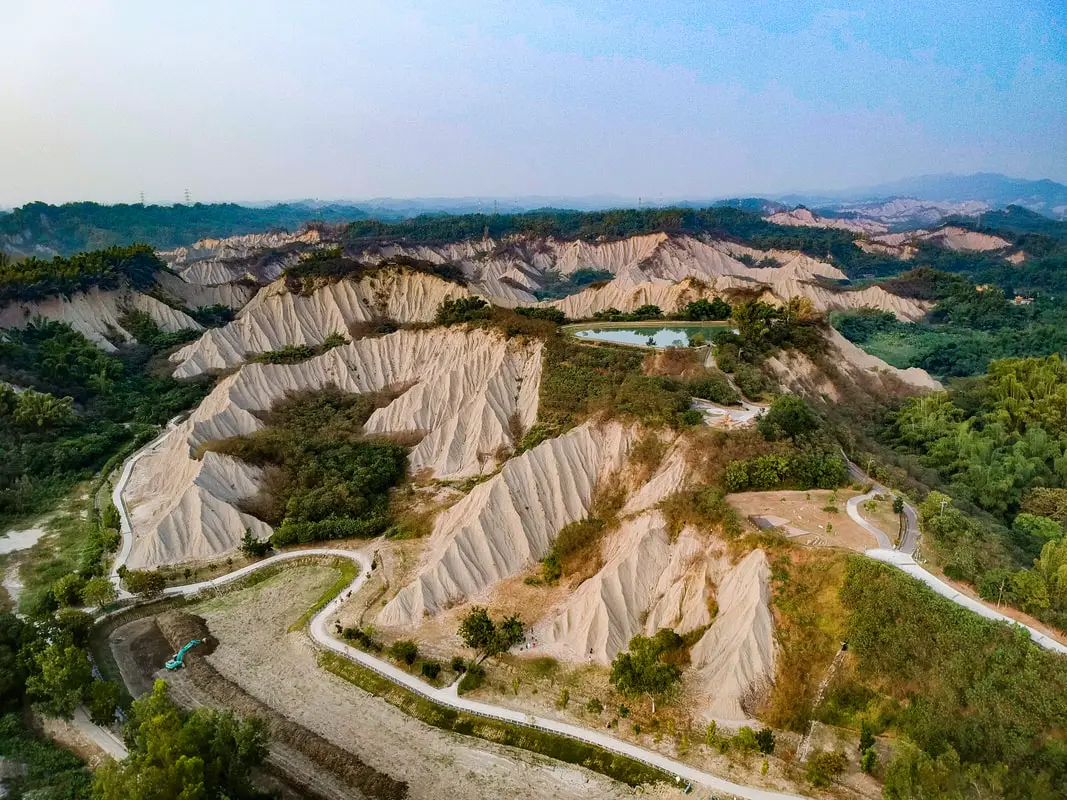
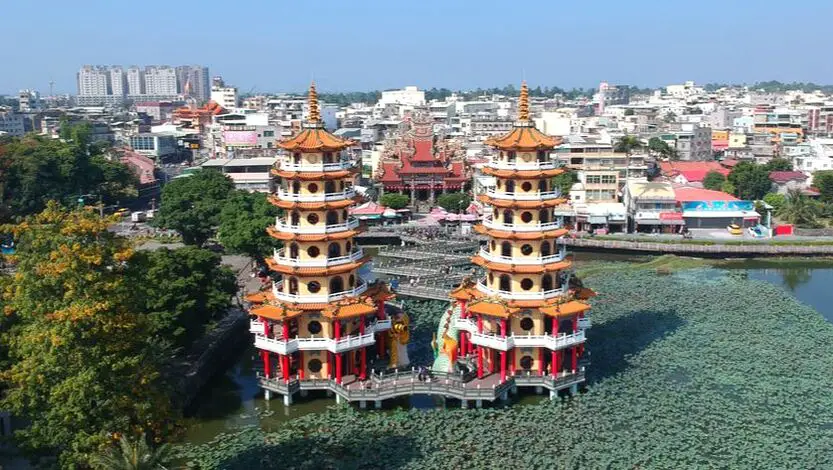
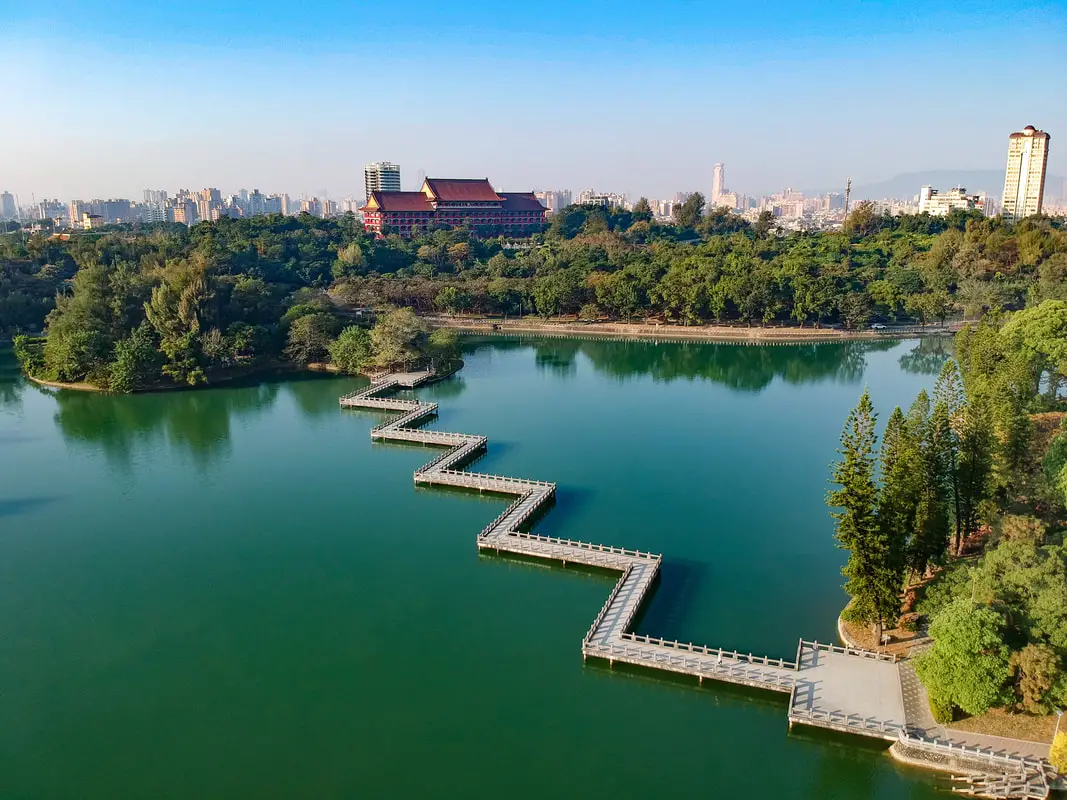
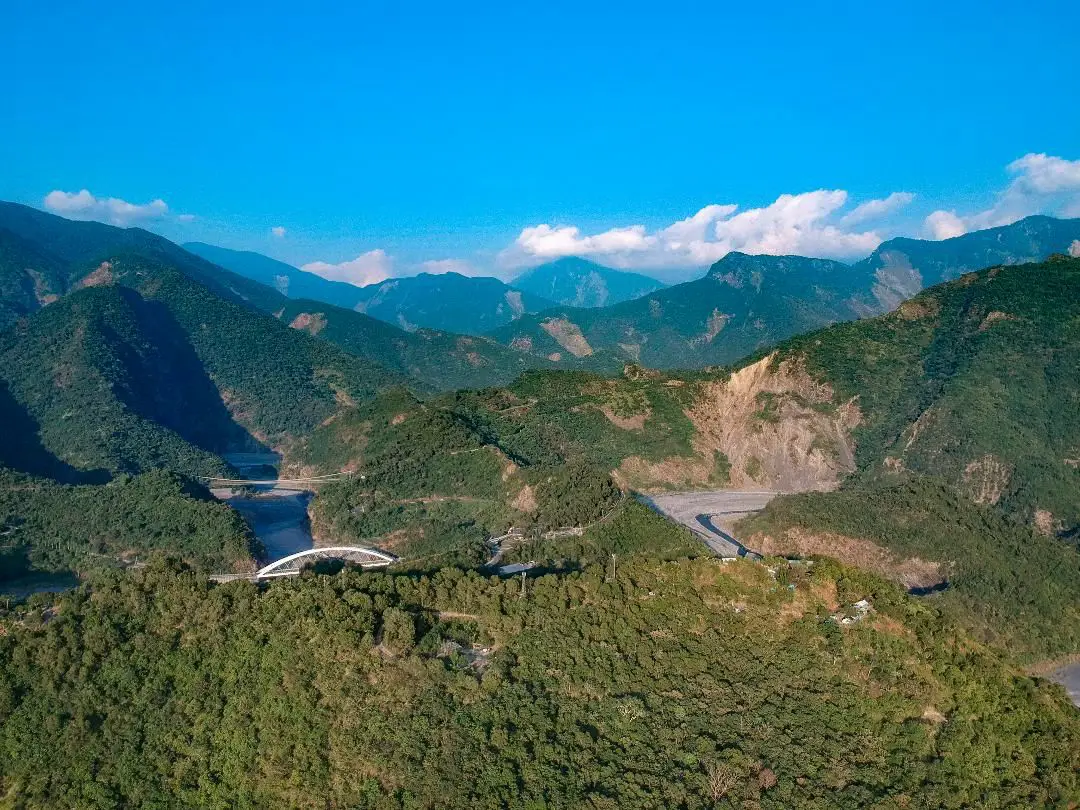
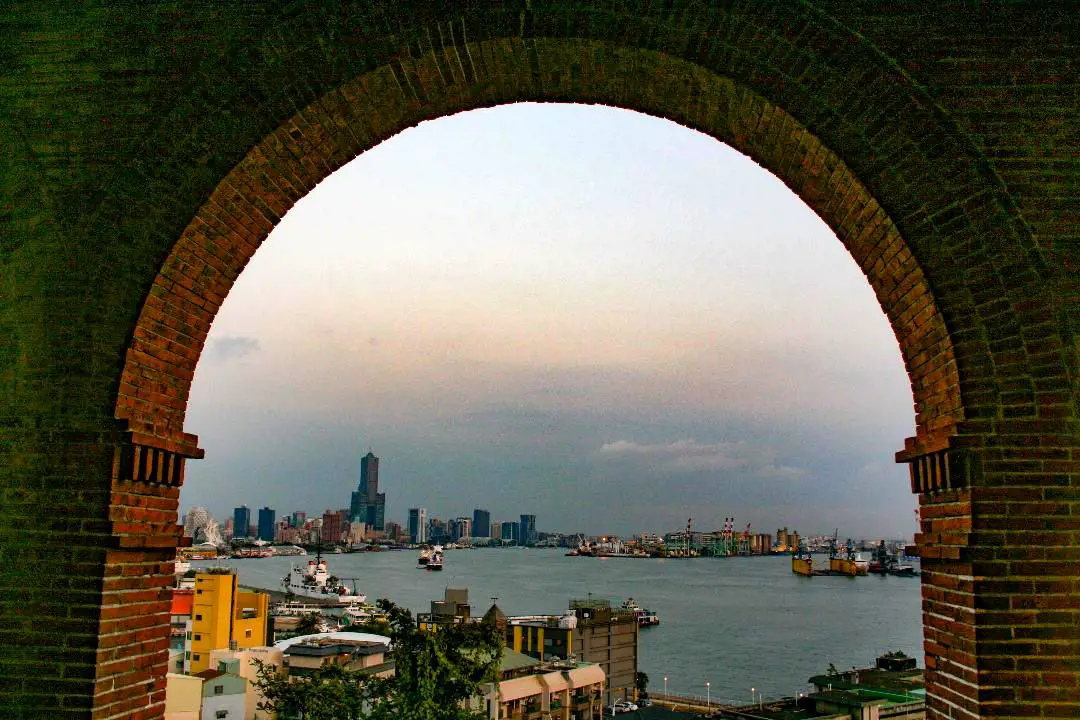


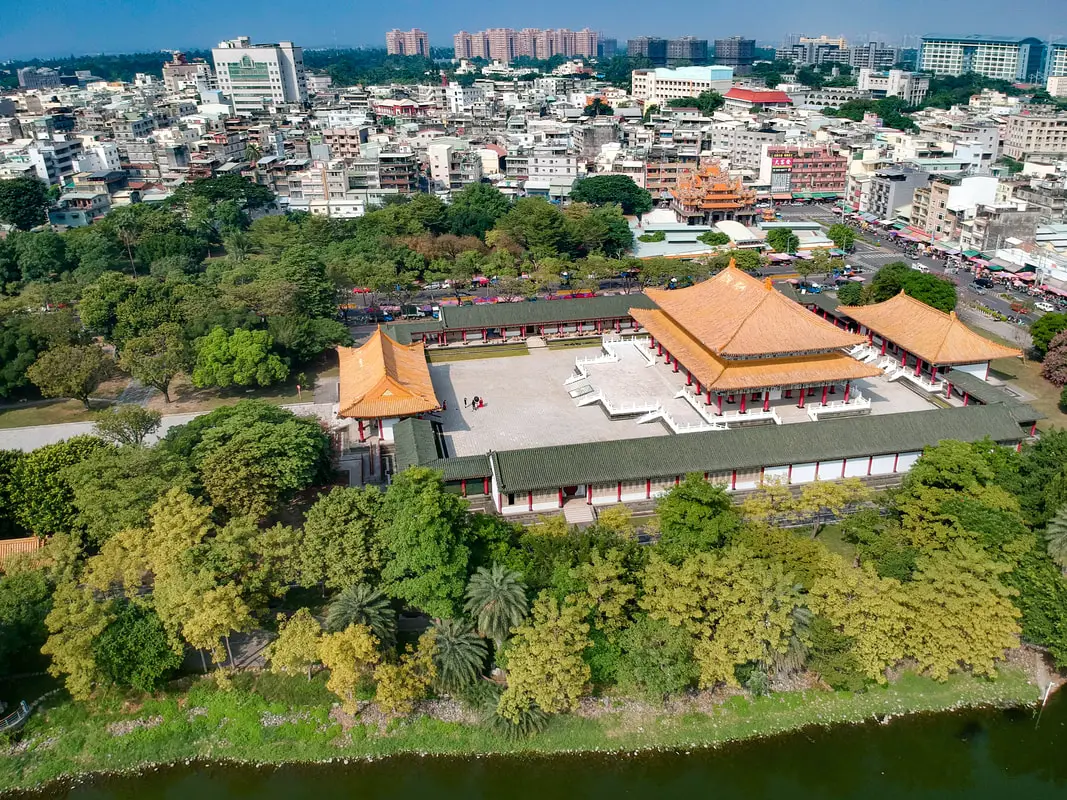
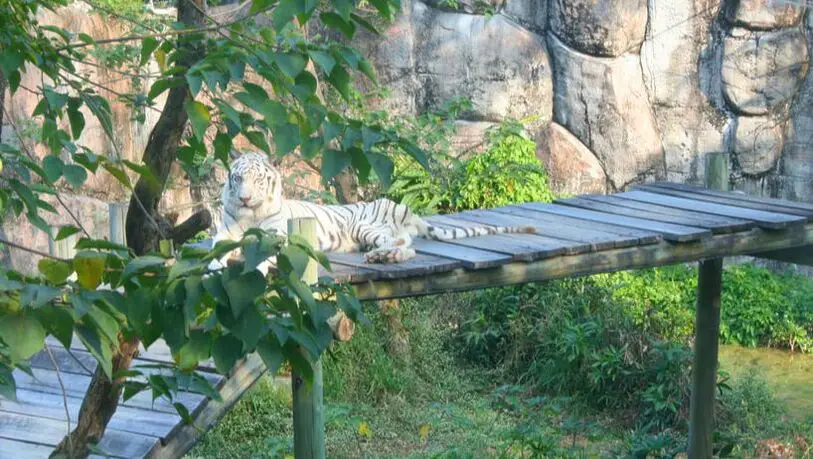
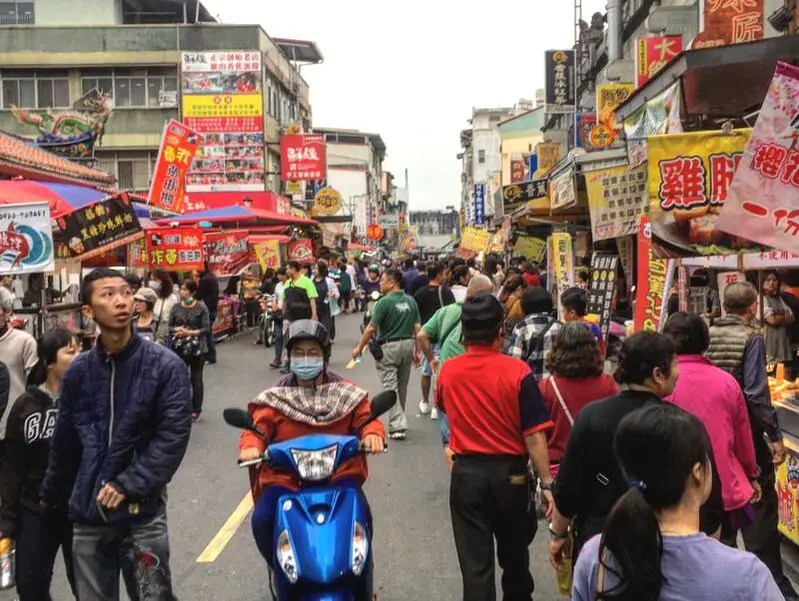
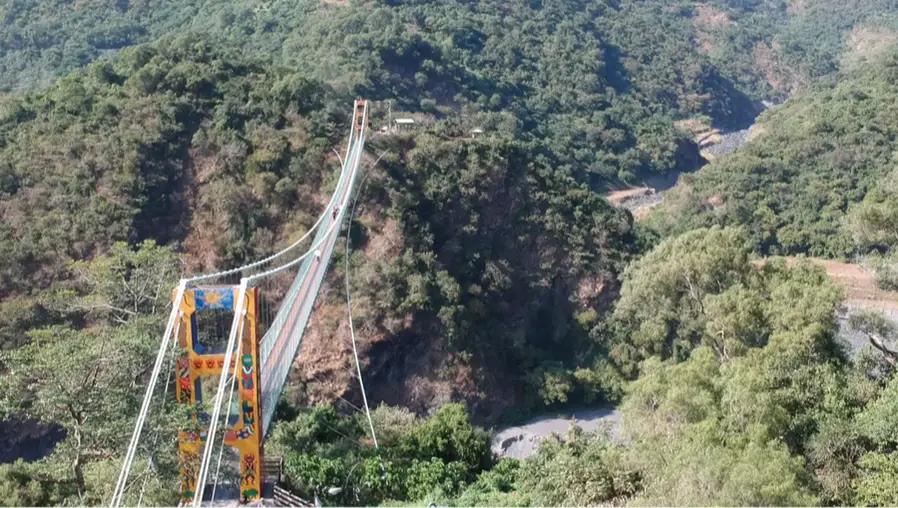
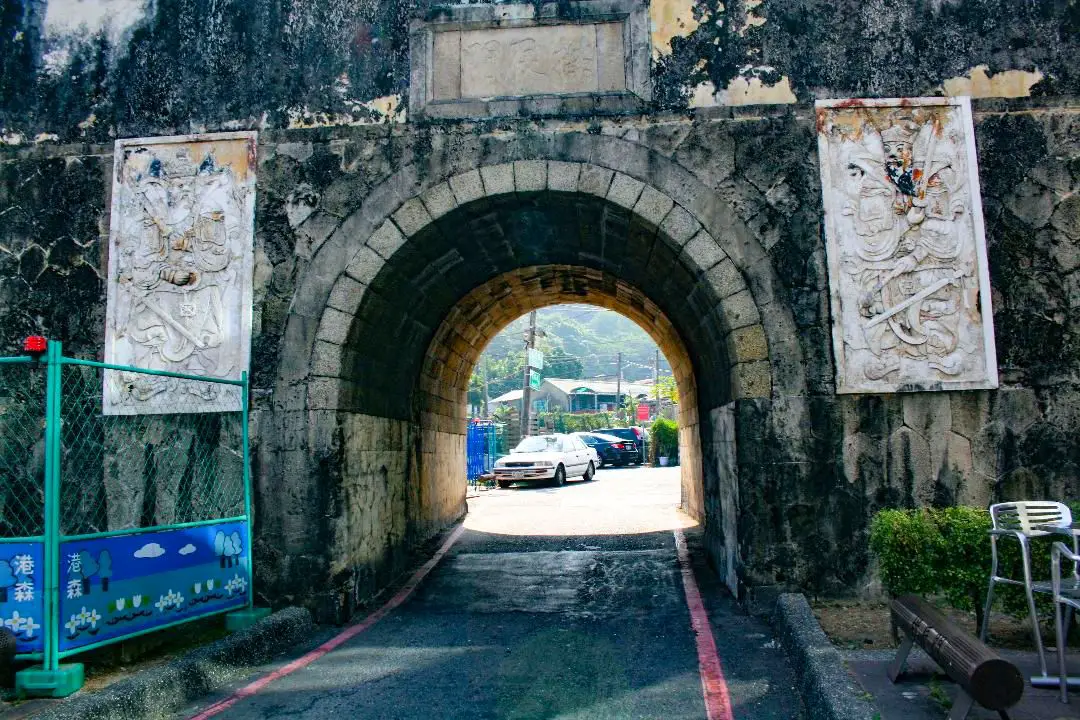
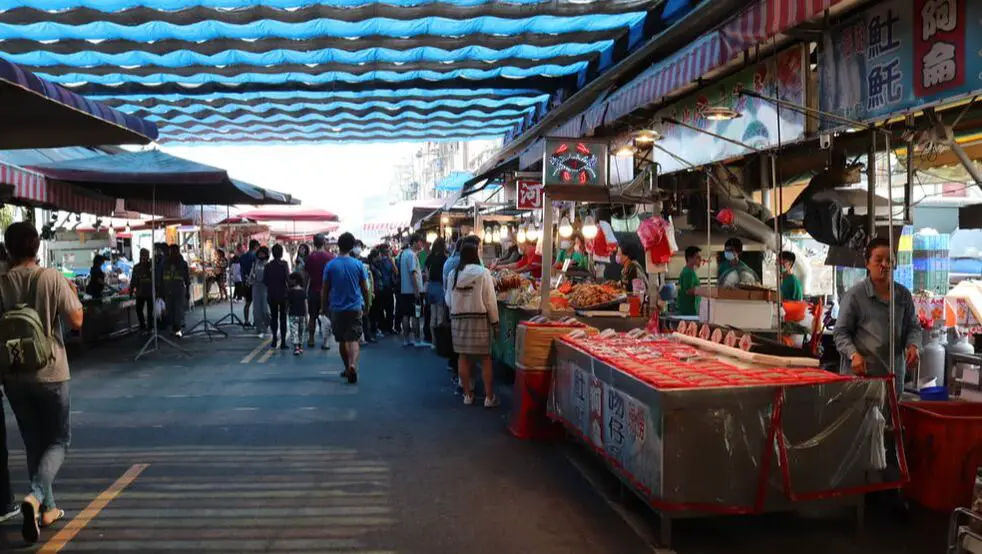
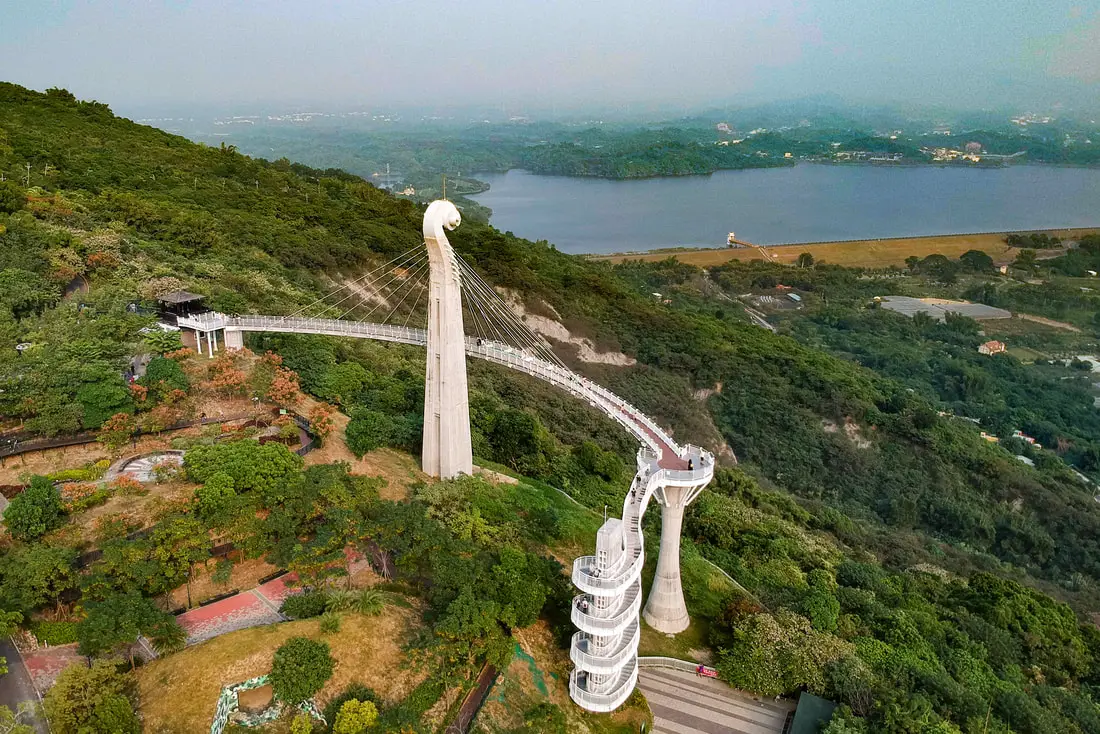
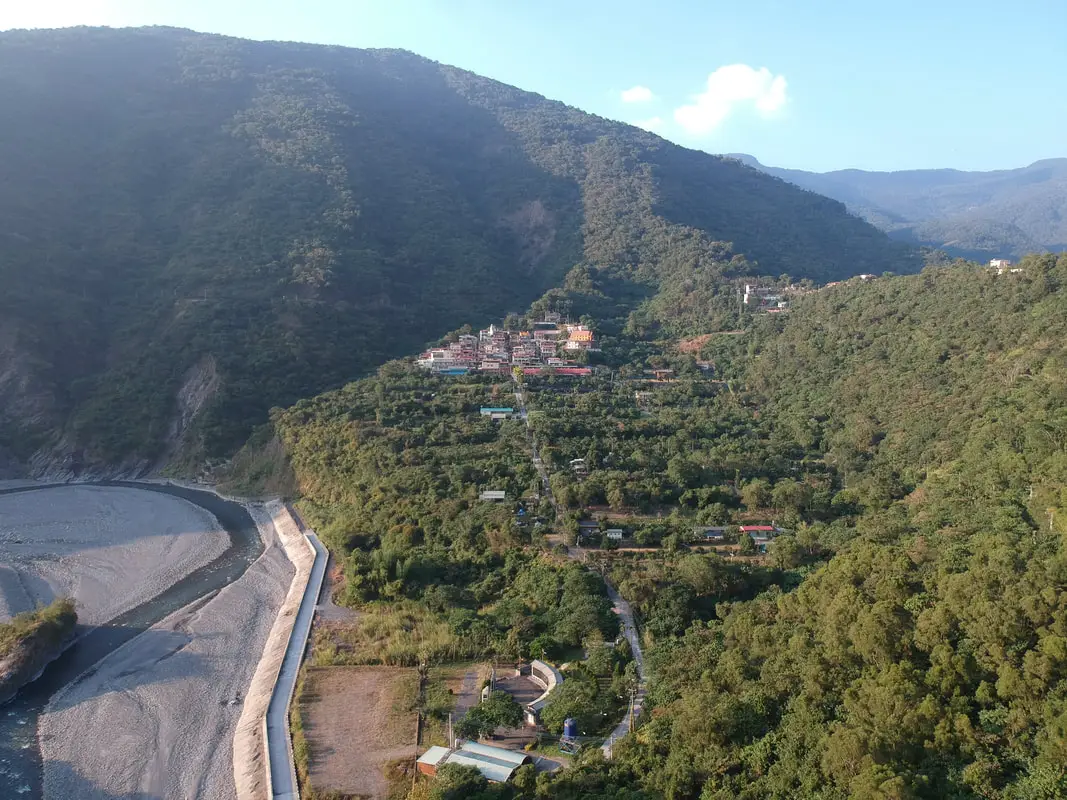
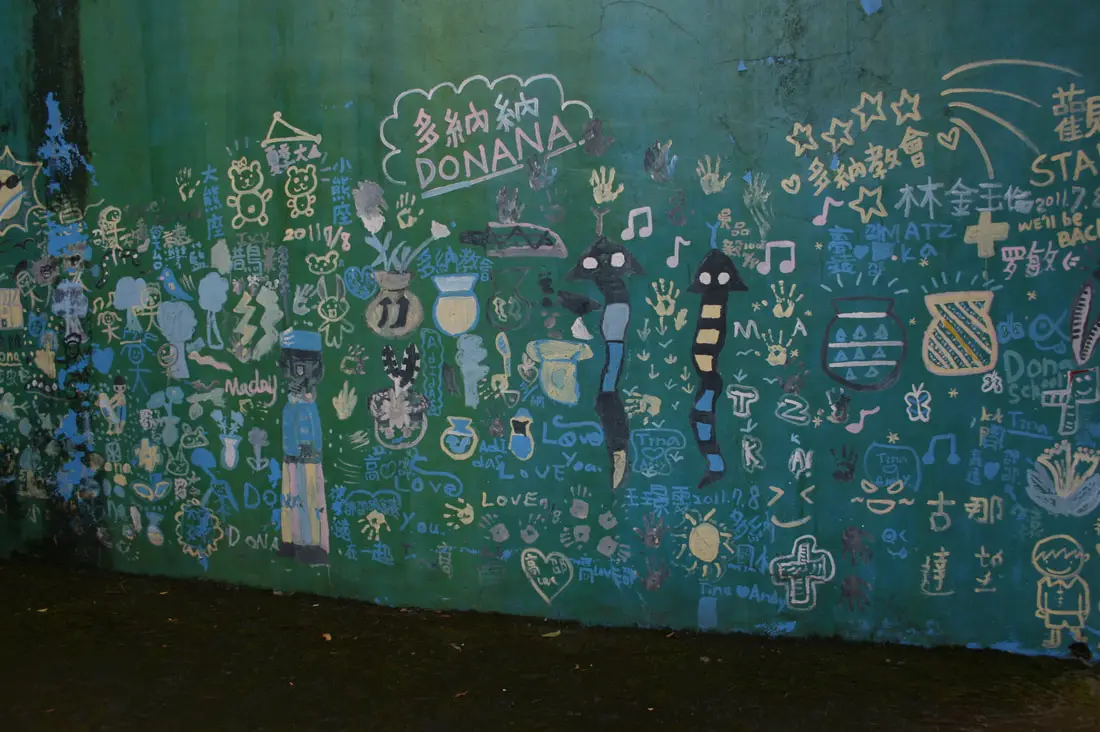
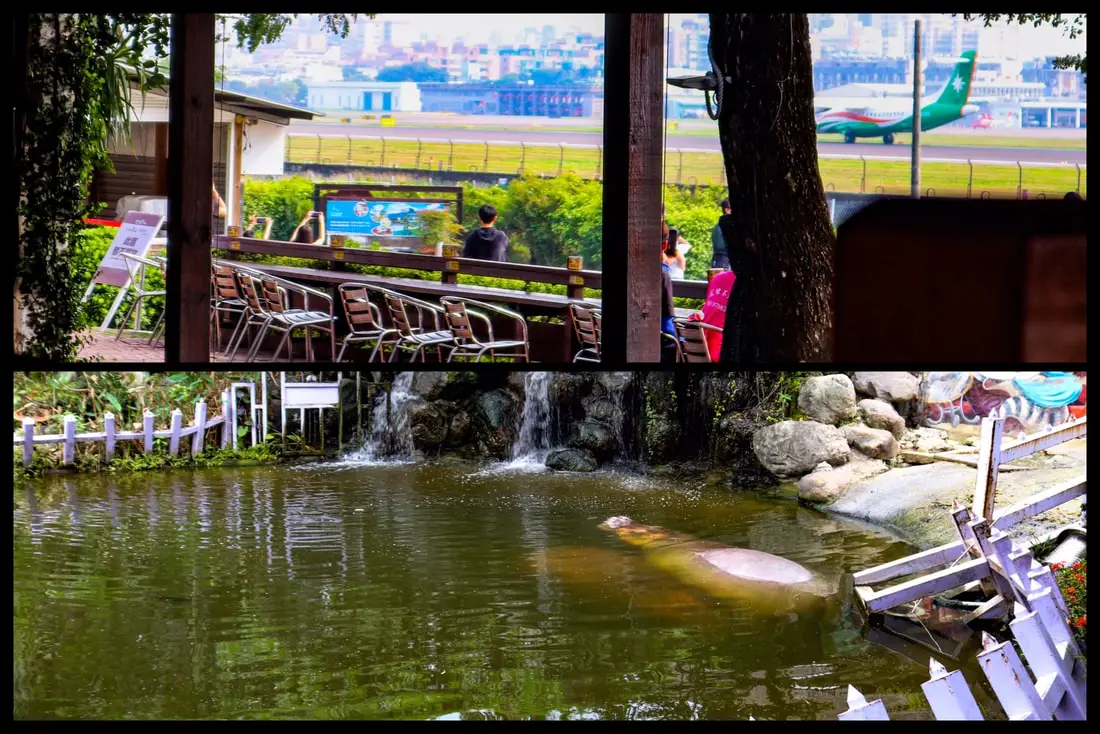

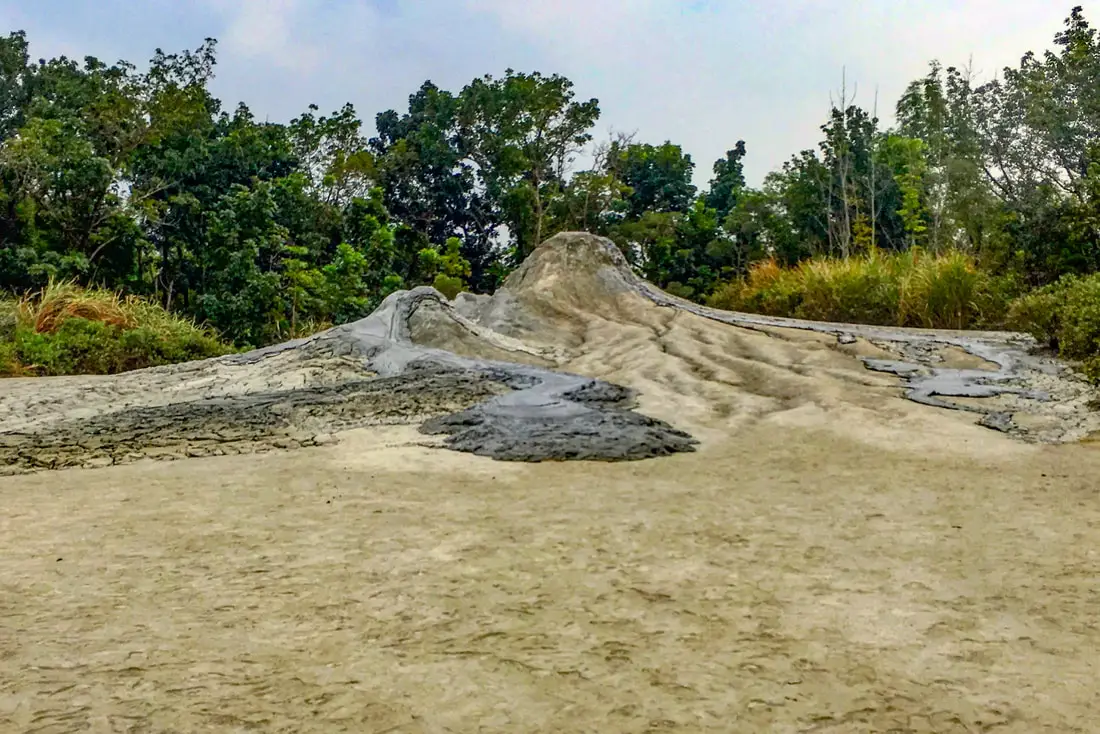
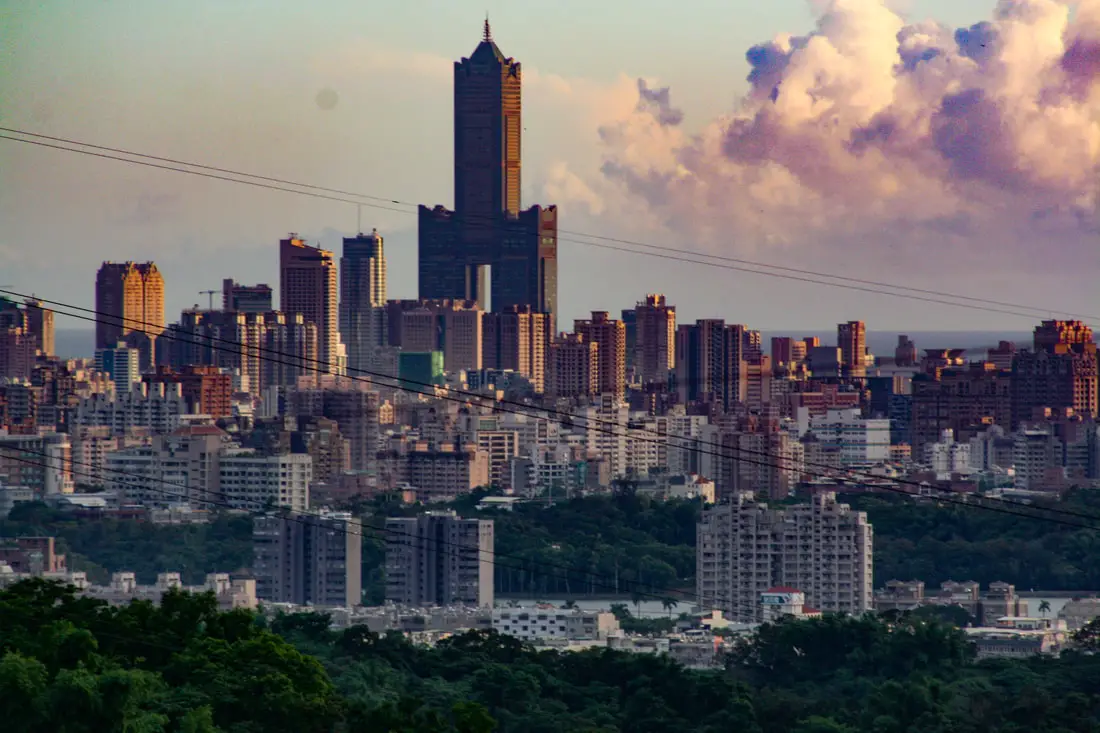
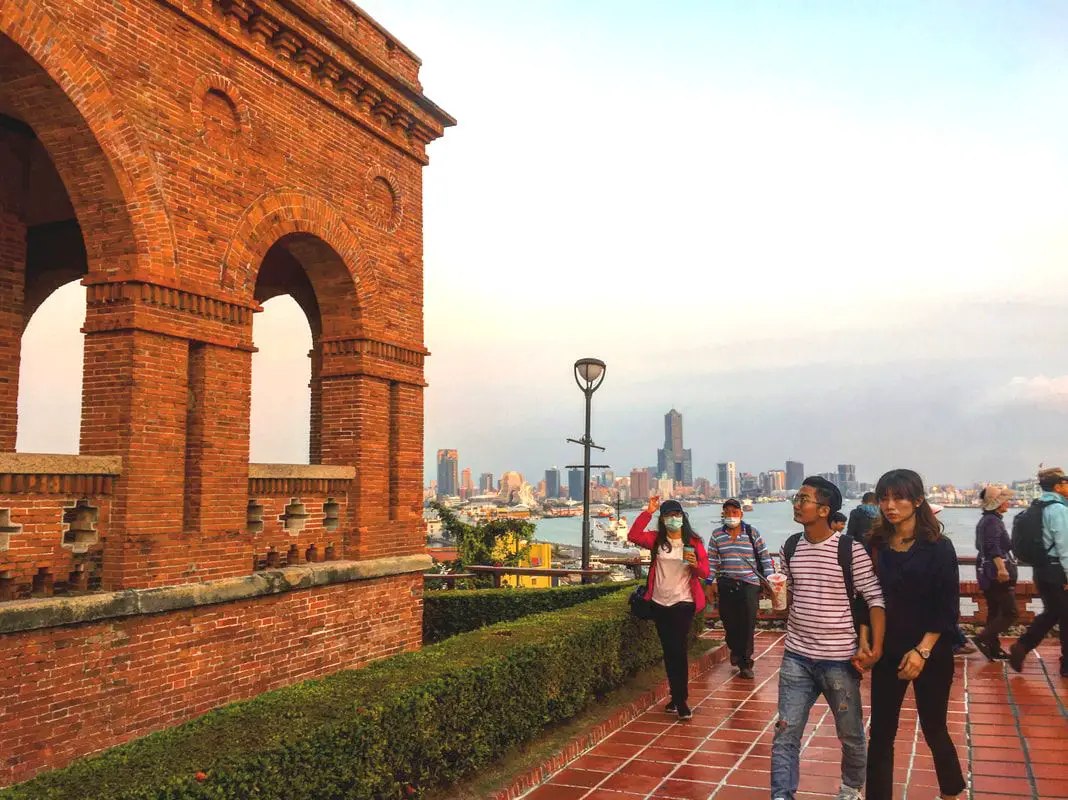
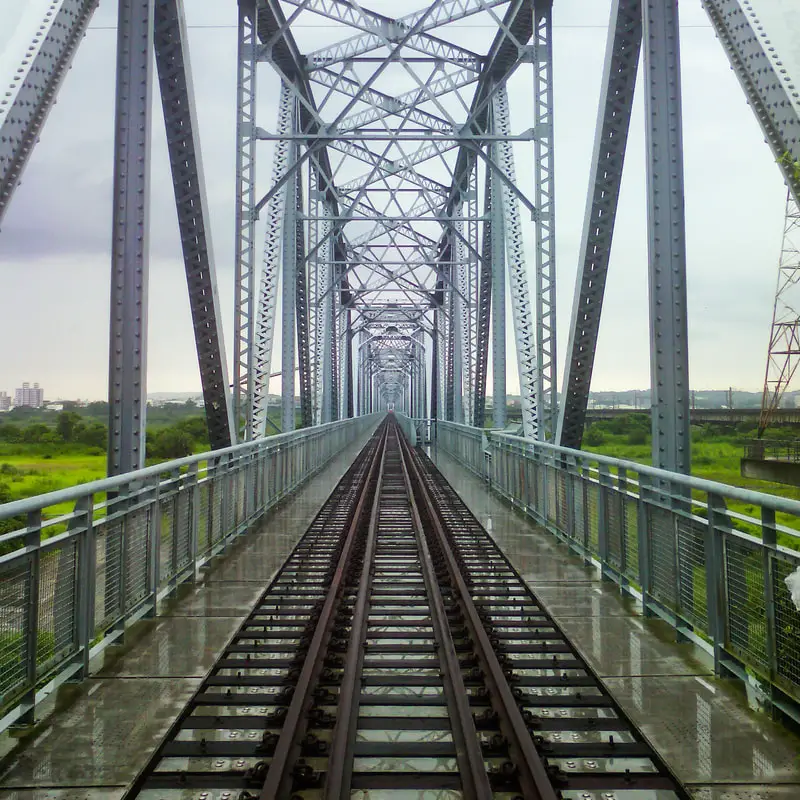
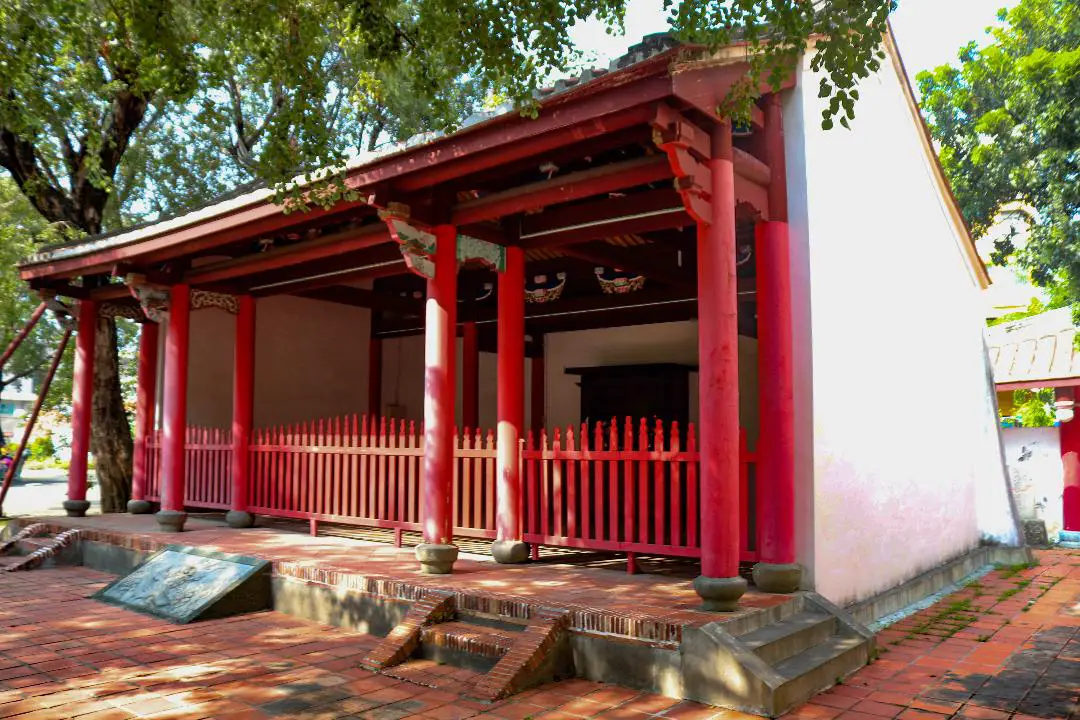
 RSS Feed
RSS Feed
